SEASONS
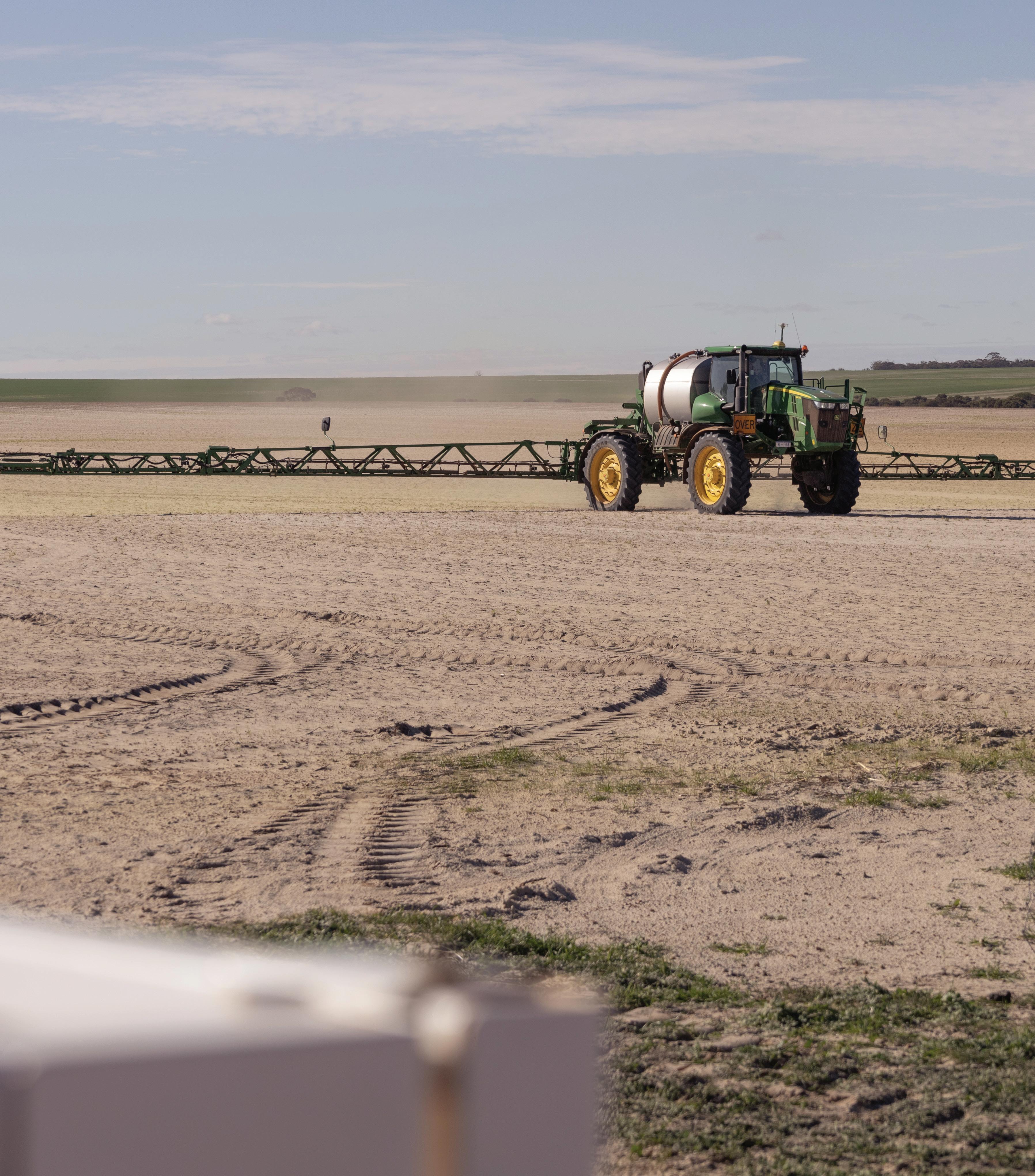
FARMING NEWS FOR AUSTRALIAN FARMERS WINTER 2024 ELDERS WELCOMES 2024 GRADUATE AGRONOMY COHORT PG 23 OPTIMISE YOUR FLOCK WITH ELDERS LIVESTOCK PRODUCTION SPECIALISTS PG 4 WHY ADDRESSING BOVINE RESPIRATORY DISEASE (BRD) AT WEANING IS IMPORTANT PG 11



Find Us Online Seasons is brought to you by Elders /EldersLimited @EldersLimited @Elders_Limited @EldersRuralServices /EldersLimited elders.com.au eldersrealestate.com.au eldersinsurance.com.au eldersfinance.com.au 2 elders.com.au Optimise your flock with Elders Livestock Production Specialists 4 Next generation of livestock agents comes together in Albury 7 Low worm burdens and cattle weight loss 8 Why addressing bovine respiratory disease (BRD) at weaning is important 11 The importance of strategically treating sheep for flies early in the season 12 Take stock of EOFY with Elders 14 11 tips for growing lucerne 17 Omnia’s humate solutions 21 Elders welcomes 2024 graduate agronomy cohort 23 More flexible broadleaf weed control paying off in cereals 24
An unusually dry Autumn has left many key cropping regions in dire need of rain and prompted dry seeding across South Australia and Western Australia. Fortunes have been fairer in the east, with rainfall over Easter providing relief in many parts and allowing growers to successfully seed pasture and broadacre crops.
While the slow start to the season has delayed timings, the weather outlook for the second half of the year is cautiously optimistic. Seasonal conditions are expected to improve to support the winter crop, and to bolster already improving livestock prices. You can find information in this edition of Seasons to support better decision making with the hand of seasonal conditions you have been dealt.

Contents
Elders Market Insights are a handy resource to help you stay across growing conditions and cropping and livestock markets. We look forward to keeping you informed,
working
you, throughout a busy season ahead.
and
with
WINTER 2024 CEO Foreword 3 The new biostimulant boosting broadacre yield potential 27 Talking about adjuvants for post-emergent sprays 28 Ryegrass controlled after challenges in the previous season 31 More valuable protection for the most valuable broadacre crops 32 Full toolbox approach required against blackleg 35 Canola growers know year-round weed control is crucial 38 Keeping on keeping key diseases at bay 41 AXIAL® Xtra formulation and evolution in Pinoxaden 42 Tools for sustainable farming with Speedrite portable solar energizer range 46
Regards, Mark Allison
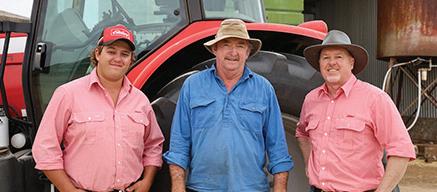
OPTIMISE YOUR FLOCK WITH ELDERS LIVESTOCK PRODUCTION SPECIALISTS
Last year Richard McInerney sold some of the best lambs his Elders livestock agent has seen, after engaging an Elders livestock production advisor.
Richard McInerney and his family own and operate a mixed farming enterprise in the mid north of South Australia, consisting of sheep, cropping and hay production.
Richard started working with Livestock Production Manager, Mark Dearing, and Livestock Agent, Tyson Fechner, several years ago, and the results have been outstanding.
Tyson said he is impressed with some of the results, with Richard’s lambs weighing in an average of eight kilograms heavier than this time last year.
“It has been amazing to see the development in the stock over the years,” Tyson said.
“Just through implementing Mark’s programs, it's made a massive difference and ultimately the profit for the client is going to be significantly better.
“Mark is really well respected in the area, he brings a lot to the table for the clients including parasite and disease control and feeding programs through tailored programs.”
Richard explained that Mark’s advice has certainly changed the sheep side of his business for the better.
“We have just found that we are really on top of everything,” he said.
“You hear about other producers having major issues with worms, or feed issues, and that’s not really a problem for us at the moment, when you’re monitoring your stock constantly and sticking to the processes, it all just sorts itself out.
“It's so important to us to have our sheep in really good health and Mark’s knowledge has been game changing.”
Mark explained that he has greatly enjoyed working with Richard, and is so proud to deliver results for him and his business.
“Tyson took me to see Richard and after seeing how keen he was to improve his sheep production enterprise, I was keen to get on board,” Mark said.
“We sat down and put together a plan and over the last couple of years we’ve really lifted the quality and production of his stock. Richard, Tyson and I all work really well together. We act proactively, planning ahead and preparing for all the life-cycle events, so nothing catches us by surprise.”
Richard said that working with both Tyson and Mark highlights the strength of the Elders livestock network of support and that this is what contributes to driving better results.
“It has been great to have Tyson come on board as a young guy having a go, and he's been really good; he is dedicated and willing to learn,” Richard said.
“The great part about this arrangement is that Mark is able to take care of the nutritional side, and animal health programs that we set up at various times of the year, and then Tyson's got his finger on the pulse with all the markets and advice on that side of the process.”
Mark said he feels this integrated approach is the key to success with his clients.
“The key to success is that we are able to work together – the livestock production advisors hand in hand with the stock agents,” Mark said.
SEE RESULTS IN YOUR OWN BUSINESS
Speak to your local livestock production specialist to see how they can help optimise your business.
4 elders.com.au News

Grow businessyourwith Elders Commercial Finance
Across Australia, our skilled finance brokers are ready to help you with all your commercial finance needs.
Elders brokers will talk to you about your goals and finances and then search our 30-lender strong network to help you find a suitable loan option. We have a wealth of knowledge when it comes to navigating commercial finance options.
Contact us today – we’re here to help you make your dreams a reality.
5
Brokerage services provided by credit representatives of Elders Home Loans Pty Limited (ABN 22 118 064 654; Australian Credit Licence 384408). Lending criteria apply. Credit representatives may not offer the products of all lenders. SCAN ME Visit elders.com.au/loans to speak to a finance broker today.
JUNE 17 – JUNE 18 2024

Sale will be held exclusively on
With our no fuss online clearing sales process, there is no need to get the farm ‘sale ready’. Simply speak with your local Elders branch to register as a vendor, and then once signed up, your local Elders representative will arrange a time to visit you on property to take photos and a description of your goods to sell through our no fuss, all online, clearing sale.
JUNE 17 – JUNE 18 2024
Our inaugural statewide clearing sale was a proven success in March, with close to 30,000 catalogue views. Registrations are now open for vendors for the next sale, set for June.
When sale day comes around, sit back and watch your goods sell from the comfort of home. Wait for those extra dollars to roll in. Your agent will work with buyers to collect your items.
Get involved in this high-pro le online sale, and reap the bene ts. Speak with your local Elders branch to register as a vendor in this sale today.
6 elders.com.au News
ONLINE
SELL
WITH CONFIDENCE
NEXT GENERATION OF LIVESTOCK AGENTS COMES TOGETHER IN ALBURY
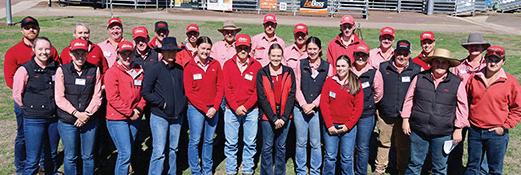
This week, Albury played host to twenty livestock agents in-training, as part of the Elders Livestock Career Development Program.
The event brought together first and second-year trainees from various corners of Australia, fostering connections that will form the base of their professional networks.
The first year trainees were officially inducted into the Elders Livestock Career Development Program, while the second years graduated, but all came together to learn, connect, and nurture industry relationships.
First-year trainee, Riley from Dalby in Queensland, emphasised the importance of learning to interact with clients and build relationships.
“One of the major things I've taken away is learning how to interact with different clients, as well as building relationships through our clientele,” he said.
“The variety of teaching methods was also an important part of the experience, it was a good mix of theory and practical learning. We spent time understanding the ‘how and why’ of working with stock and then put it into practice at the saleyards.”
Nigel Starick, Livestock Manager for central Victoria, and one of the facilitators of the program, shed light on the significance of such initiatives for the future of the industry.
“It's huge for our business, if we don't recruit these young men and women and train them to be stock people, the industry has no future,” Nigel said.
“We play a critical role in nurturing young talent for the sustainability of the livestock sector. The program aims not only to teach marketing and industry specifics but also to cultivate natural stockmanship among participants.”
Nigel, like many Elders livestock managers and agents, began his journey in the industry nearly two decades ago as a trainee himself. The program has of course evolved since then, and an advancement in technology has opened new horizons for aspiring stock agents. Easy access to resources like smartphones, tablets, and computers allows knowledge and information to sit at an agent’s fingertips.
Samantha Quintal, Elders People Operations Manager acknowledged the importance of the program and the uniqueness of a tailored training opportunity.
Samantha said, “one of the distinguishing factors of the Elders program is its extensive network, which spans across Australia, and provides our trainees hands-on experience and opportunities to develop the essential skills needed to move into a successful livestock career with us.”
The program also emphasised proper safety awareness and techniques for the up-and-coming agents, with all trainees required to complete safe livestock handling training. The cohort is assisted by seasoned livestock managers and Elders’ dedicated safety team to comply with business and industry guidelines.
Peter Homann, National Livestock Manager, expressed his pride in the program and its participants.
“It gives me great pride to witness the quality of this year’s trainees and graduates,” he said.
“One thing Elders has always done well is invest in our trainee program, and to see the training facilitators being the likes of Nick Gray, Matt Tinkler, and Nigel Starick, who have all gone through the program and are now managers teaching the next generation, it's just wonderful.”
As the event in Albury concluded, participants left with more than just theoretical knowledge; they departed with a sense of camaraderie and a network poised to support them throughout their careers in the livestock industry. With initiatives like these, Elders continues to play a crucial role in shaping the future of Australian agriculture.
7 News
LOW WORM BURDENS AND CATTLE WEIGHT LOSS
It is well known that cattle worms can cause weight loss. New research has confirmed that young cattle lose weight even when worm egg counts (WEC) are very low (10 to 100 eggs per gram).1
Even in a dry season, when worm numbers are expected to be lower, using an effective drench in young cattle is essential to avoid health and productivity issues.
Young cattle are losing significant weight even at very low worm egg counts.
Research has linked the results seen on worm egg counts to production loss.1-5 A key finding is that young cattle lose significant weight despite low worm burdens.
Research in 2021 found that weight gain progressively decreased as WECs increased (pictured). Young cattle lose 1.5 kg a month when worm egg counts were only 10 to 99 eggs per gram. Even at these low levels, worms decreased average daily gain (ADG) by 11 per cent.1

When worm egg counts reach 700 eggs per gram, cattle lost 6 kg over the month, with average daily gain reduced by 200 grams.1
A detailed review of studies in 2022 found similar findings with a slight increase of worm egg counts equal to a decrease of ADG by 5 to 15 per cent. The work shows a predictable relationship between increased WEC and relative daily growth rate.2
Under dry conditions, cattle will still need an effective drench.
Under hot and dry conditions, immature stages of worms will not survive as long in the environment. This decreases the risk of animal accumulating larger worm burdens.
However young cattle will still be exposed to worms and their growth will be impacted. Low parasite burdens will also have more impact when cattle face declining protein levels under seasonal conditions.
References:
Even if the intake of new worm burdens is low, pre-existing Ostertagia burdens will cause damage to the lining of the stomach. Under dry conditions, high-risk cattle such as those less than two years of age, bulls and young breeders will still need an effective drench.
DO I NEED A DRENCH THAT TREATS INHIBITED OSTERTAGIA?
In southern Australia, weaners and young breeders must be protected using a drench with a label claim against inhibited Ostertagia. This is because the emergence of inhibited Ostertagia from the stomach lining causes cattle health and productivity issues. Not all combination drenches have a claim against inhibited Ostertagia. Combination drenches are always needed, regardless of the season, good or bad.
Cattle worms, especially Barber’s pole worm and Cooperia have become harder to control because of widespread drench resistance.3-6
It is recommended only to use combination drenches (products that contain more than one ingredient against the same worm) or concurrent drenches (using two products on the same day that contain a different active against the same worm).
This will ensure control of 99 to100 per cent of worms, protect against drench resistance and optimise cattle growth.6 This approach is advised regardless of the season, good or bad. Combination drenches are the new standard in cattle
WHY DID THE CYDECTIN PLATINUM TREATED CATTLE GROW BETTER?
> It’s simple - Cydectin Platinum combines the most potent and persistent active Moxidectin with the knockdown effect of Levamisole.
> It is 99 to –100 per cent effective against all key cattle worm, including against single and dual-resistant ones.1,7
> Increase cattle growth from 2 kg to 34 kg compared to single active drenches and untreated cattle all across Australia.3-6
> Cattle producers must consider moving from single active drenches to combinations like Cydectin Platinum.
1. Zepa et al (2021). Association between fecal egg count and weight gain in young beef cattle. Livestock Science Vol 244. 2. Shepherd et al (2022). A systematic review and metaanalysis of the impact of strongyle parasitism on growth rates in young cattle. Veterinary Parasitology, Vol 309. 3. Virbac (2023). Comparative Efficacy and Productivity in QLD Cattle following use of Moxidectin/Levamisole or Ivermectin/Fluazuron - Data on file. 4. Virbac (2022). Comparative Worm and Tick Efficacy Tick Counts and Productivity in QLD Cattle following Moxidectin/Levamisole or Doramectin Pour-On - Data on file. 5. NSW DPI/LLS (2021). Pearces Creek Effiacy and Production Response to Injectable Drenches - Virbac data on file. 6. Gibbison and Ball (2021). Resistance patterns to avermectins and milbemycins in current straights of Australia cattle nematodes. 7. Refer to the registered label Cydectin Platinum APVMA 88072/139297
8 elders.com.au Animal Health


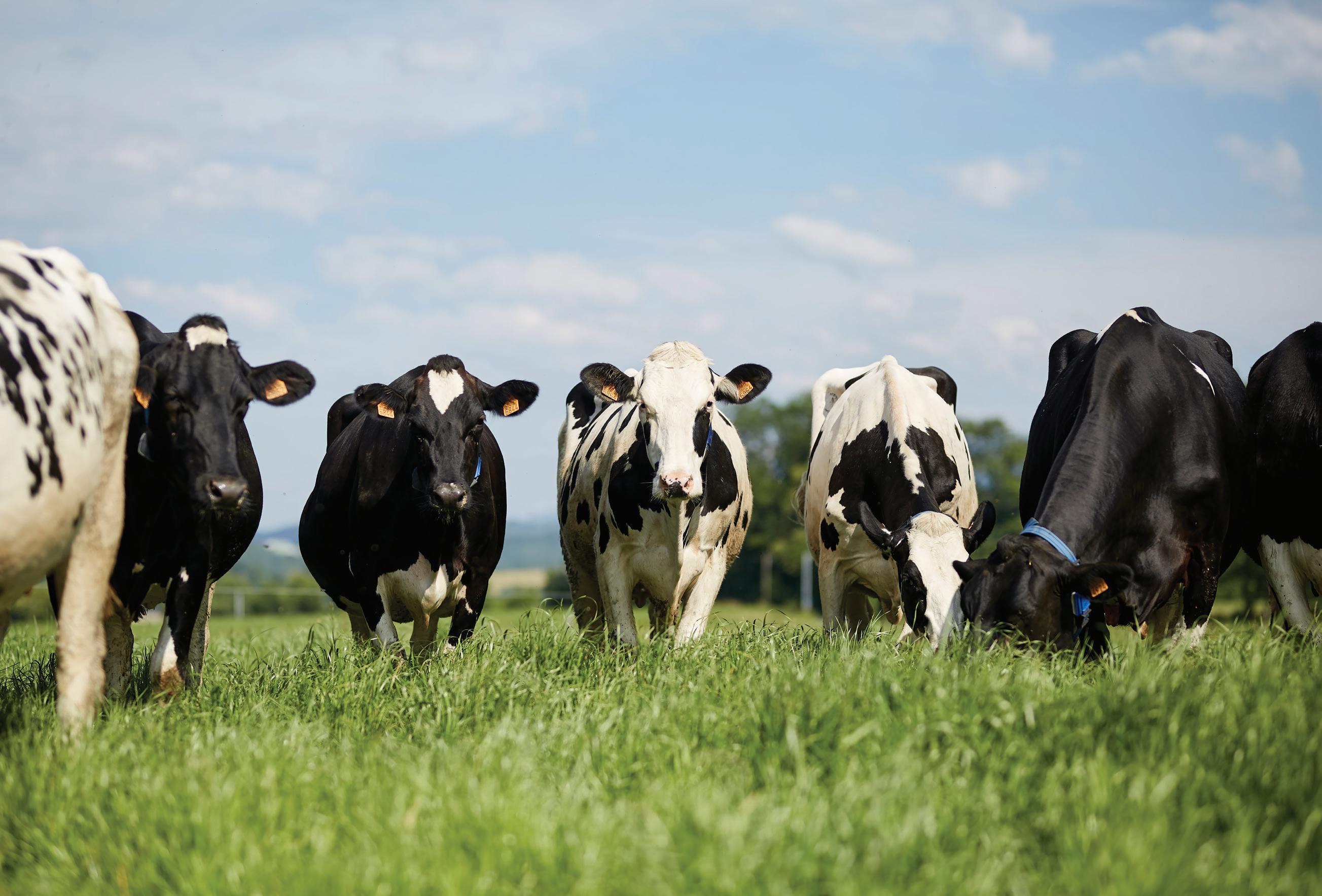


THE NEXT GENERATION DUAL-ACTIVE DRENCH FOR DAIRY CATTLE
• HIGHLY EFFECTIVE AGAINST SINGLE AND DUAL RESISTANT WORMS1
• INCREASES PRODUCTIVITY COMPARED TO SINGLE ACTIVE DRENCHES2
• PERSISTENT ACTIVITY – CLEANER PASTURES FOR UP TO 35 DAYS1
• DMI-SORB POUR-ON TECHNOLOGY − 23% FASTER ABSORPTION THAN CYDECTIN
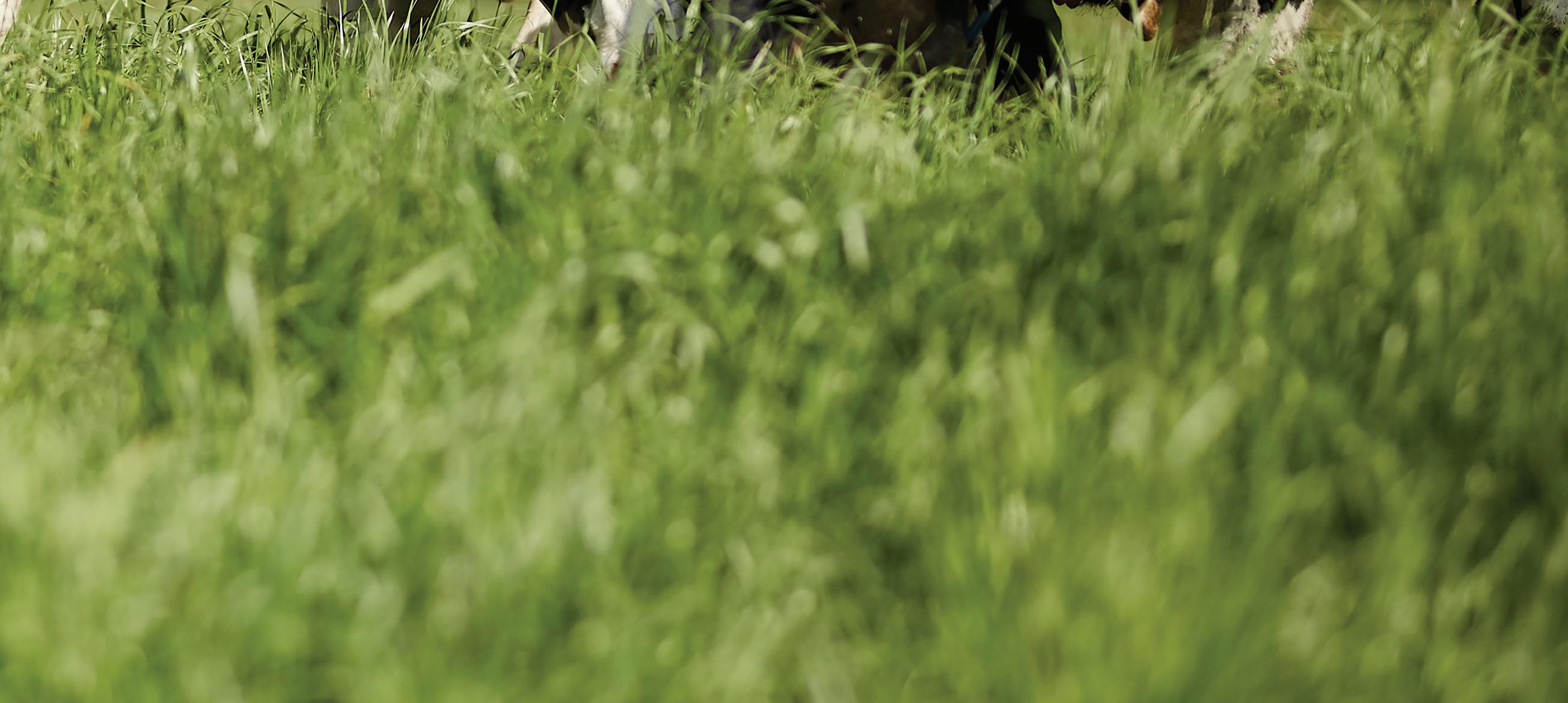

1. Refer to registered label (APVMA n.88072). 2. Virbac (2022) Comparative drench efficacy and productivity in dairy cattle. Data on file. 3. When compared to Cydectin Pour On. VAMB3198 Registration Trial – Virbac Data on File. The benefits listed in the trials are not necessarily registered label claims.
POUR-ON3 search
Platinum
Cydectin

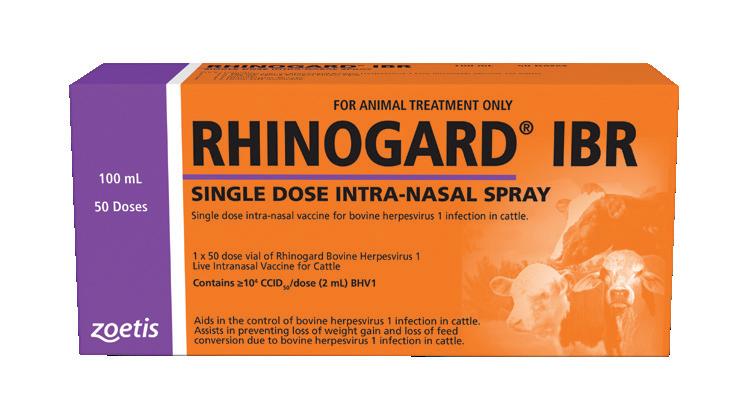

WHY ADDRESSING BOVINE RESPIRATORY DISEASE (BRD) AT WEANING IS IMPORTANT
One of the most prevalent and challenging health issues faced by young cattle at weaning is BRD. BRD is a lung infection in cattle which presents as pneumonia and pleurisy. It is a complex condition that arises during periods of stress. Weaning is one of those stressful events, and given this, BRD should always be considered at weaning, and management practices implemented, to reduce its incidence and subsequent impact.
BRD is no longer considered just a feedlot disease. Processors report that the incidence of BRD in the abattoir is similar between feedlot and grassfed cattle.
BRD is an important disease because it impacts animal welfare and productivity. BRD results in,
> a 10 to 20 per cent reduction in average daily gain (ADG)1,
> a reduction in meat quality and marbling1, and
> in some cases, death1,2,3.
BRD is not caused by a single bacteria or virus but is instead triggered by the interaction of stress combined with viral and bacterial infections. The most common viruses associated with BRD include infectious bovine rhinotracheitis (IBR) and pestivirus. The most common bacteria associated with BRD is Mannheimia haemolytica (MH).
Signs of BRD include nasal discharge, redness and discharge from the eyes, neck extension, coughing, and animals being off feed or socially distancing themselves. Sometimes however signs are minimal, and the presence of disease is difficult to detect and often missed.
To effectively control BRD at weaning, it is imperative to implement both changes to management and use effective vaccines.
Identifying and minimising stress is a critical first step. Stressful activities such as having to move or transport stock, and the stress of weaning itself, may be beyond our control. However, other stressors can be minimised. Some of these include:
1. Weaning timing: Only weaning calves that have reached an optimal weight.
2. Housing and feeding: Provide adequate clean space, high-quality feed and water, and appropriate bunk and trough space
3. Parasite management: Drench all calves with an effective drench. Due to resistance, combination drenches are often needed.
4. Weather considerations: Choose weaning dates based on forecasted weather conditions.
5. Numbers: Wean in groups of less than 100
6. Use low stress stock handling techniques
By addressing the above, we can significantly reduce the burden on weaner calves and minimise their susceptibility to BRD. However, controlling infectious agents is equally crucial and hence the use of vaccines.
To control the main infectious agents, single dose vaccines, such as Rhinogard IBR and Bovi-Shield MH-One, are a great option with their rapid protection, given there is often limited time to implement a two-dose vaccination program before the weaning period.
RHINOGARD IBR
Rhinogard IBR is a single dose intranasal vaccine with a rapid onset of action. The benefit of Rhinogard IBR is the unique mode of action. Unlike injectable IBR vaccines, Rhinogard IBR produces a local immune response in the upper respiratory tract, where the

virus gets in, as well as antibodies in the bloodstream. This vaccine also has a unique label claim for improved ADG and improved feed conversion efficiency under disease challenge.
BOVI-SHIELD MH-ONE
Bovi-Shield MH-One is a single dose vaccine that provides protection against BRD involving Mannheimia haemolytica (MH) in 7 days. It employs patented technology.
In conclusion, the management of BRD at weaning is a multifaceted challenge that requires a proactive approach. Bovi-Shield MH-One and Rhinogard IBR are both single dose vaccines offering rapid and convenient means of protecting weaners against BRD with the added benefit that you only need to handle cattle once.


1.
2.
11 Animal Health
References:
Blakebrough-Hall C, McMeniman JP, Gonzalez LA. An evaluation of
the economic effects of bovine
respiratory disease on animal performance, carcass traits, and economic outcomes in feedlot cattle defined using four BRD diagnosis methods. J An
Sc. 2020 98:2:1-11
Waltner-Toews D, Martin SW, Meek AH. Dairy calf management, morbidity, and mortality in Ontario Holstein herds: III. Association of management with morbidity. Prev. Vet. Med. 1986; 4:137–158. 3. Van der Fels-Klerx HJ, Martin SW, Neilen M, Huirne RBM. Effects on productivity and risk factors of Bovine Respiratory Disease in dairy heifers; a review for the Netherlands. NJAS.
2002;50:(1)27–45.
THE IMPORTANCE OF STRATEGICALLY TREATING SHEEP FOR FLIES EARLY IN THE SEASON
WHERE DO FLIES GO AT THIS TIME OF YEAR?
The Australian sheep blowfly Lucilia cuprina is the primary fly species responsible for flystrike.
In cooler conditions at the end of the fly season, any further development of Lucilia cuprina from its larval or ‘maggot’ stage is inhibited or “arrested” at the prepupae stage. This lifecycle stage is away from the sheep – usually in the top 3 to 4cm of soil. This allows survival of Lucilia cuprina through winter, with development not resumed until conditions are again suitable.
It is then the increase in soil temperature in spring in southeastern Australia that has been shown to trigger synchronous emergence of the first generation of flies for the new season1, regardless of exactly when the larvae were deposited.
Given that this species of blowfly is largely dependent on sheep as a breeding resource2, fly numbers can build up very rapidly under suitable environmental conditions, assuming susceptible sheep are available.
The seasonal nature of fly activity actually provides a unique opportunity to plan ahead.
Strategically treating sheep early in the season with an effective and long-lasting chemical prevents fly numbers from building up by removing the host environment required for flies to reproduce. This can significantly reduce subsequent fly pressure and the risk of flystrike in the season ahead.
If chemical treatment is applied to sheep before flies emerge at the start of the fly season, sheep are essentially removed as a resource for the propagation of the fly population when the first generation appear. As emergence is relatively
synchronous and the first generation is typically small, this can have a significant effect in reducing fly numbers and the risk of flystrike for the rest of the fly season.
Optimum fly control will also depend on farm management practices. Integrating early season treatment with strategicallytimed shearing or crutching will further reduce susceptibility to flystrike and contribute to reducing fly numbers3 –remembering to be conscious of wool withholding periods.
Elanco Brand Manager Kathryn Humphries recommends the use of CLiK™ Extra for early season treatment. CLiK™ Extra contains dicyclanil, a potent insect growth regulator (IGR). Dicyclanil products provide long lasting protection from flystrike and break the lifecycle – ideal for strategic control.
On-farm research into early season treatment identified that chemicals used for this purpose have to be relatively long acting to suitably cover the full period of spring emergence.1 The availability and ease of application of insect growth regulators to protect sheep for extended periods makes them ideal for this purpose.3,4
CLiK™ Extra contains 30 per cent more dicyclanil than CLiK™ and sets the benchmark in flystrike prevention. CLiK™ Extra has a registered protection period of up to 29 weeks, ideal for early season treatment – even in years with a late or delayed start to the fly season.
CLiK Extra is indicated for use on sheep either off-shears or with any length wool, with a meat withholding period of 21 days, wool withholding period of 3 months and ESI of 63 days.
Always read and follow the label directions. Good agricultural practice is essential for optimal blowfly strike prevention.

 References:
References:
12 elders.com.au Animal Health
1. DeCat, S. et al. (2012). Survival over winter and spring emergence of Lucilia cuprina (Diptera Calliphoridae) in south-eastern Australia. Aus J of Entomology 51:1–11. 2. McKenzie, J.A. & Anderson, N. (1990). Insecticidal control of Lucilia cuprina: strategic timing of treatment. Aus Vet J 67(10):385–386. 3. Larsen, J.W.A. et al. (2012). Prevalence of breech-strike in mulesed, clipped and unmulesed Merino hoggets in south-eastern Australia. Aus Vet J 90(5):158–166. 4. Bowen, F.L. et al. (1999). H.R.: Long-lasting prevention against blowfly strike using the insect growth regulator dicyclanil. Aus Vet J 77:454–460.

PURCHASE 2 X 20 L DRUMS BEFORE 15/09/24 AND GET A OR 336 ELANCO REWARDS POINTS* $250 $250
Always read and follow the label directions. Good agricultural practice is essential for optimal blowfly strike prevention.
^Compared to CLiK. CLiK Extra Spray-On contains 65 g/L dicyclanil and provides up to 29 weeks protection from blowfly strike. Wool WHP: 3 months. Meat: WHP 21 days. ESI: 9 weeks. CLiK Spray-On contains 50 g/L dicyclanil and provides 18–24 weeks protection from blowfly strike. Wool WHP: 3 months. Meat WHP 28 days. ESI: 9 weeks. References: 1. Refer to registered labels. 2. When used for prevention against breech strike, or body and breech strike. 3. Insecticide resistance in sheep blowfly larvae, Sheep CRC, FlyBoss 2021. *Visit promo.elancorewards.com.au for terms and conditions. Offer not valid in conjunction with any other offer. Only available while 20 L drums are in-stock. Open to AU residents. Purchase between 01/06/24 and 11:59 pm AEST 15/09/24. Claims commence 01/06/24 and close at 11:59 pm AEST 15/10/24
13
GIFT CARD
or once allocated gift card stock runs out, whichever is first – see terms and conditions. Purchase must be in a single transaction. Retain receipt. Only one claim permitted per claimant. Promoter: Elanco Australasia Pty Ltd (ABN 64 076 745 198) of Level 3, 7 Eden Park Drive, Macquarie Park, NSW, 2113. CLiK™, Elanco and the diagonal bar logo are trademarks of Elanco or its affiliates. ©2024 Elanco or its affiliates. EAH24215. PM-AU-24-0244. 30% active ingredient1^ protection
up
five weeks1^ protection against breech strike2^ protection against development of resistance2,3^ For peace of mind INDICATED
USE ON SHEEP OFF-SHEARS OR WITH ANY LENGTH WOOL CLiK™
protects against blowfly strike for up to 29 weeks, as well as protecting mulesing and marking wounds. farmanimal.elanco.com/au 1800 995 709
against flystrike –
to
FOR
Extra
Scan here to claim your gift card or Elanco Rewards points.
TAKE STOCK OF EOFY WITH ELDERS
The end of the financial year (EOFY) is almost upon us, but with a little bit of planning, it doesn’t have to be taxing. Elders has a range of solutions available to assist you with your preparation for tax time.
RURAL PRODUCTS PREPAYMENT PROGRAM
Make the most of a good season with our Rural Products Prepayment Program, which allows you to prepay your farm and rural products purchases.
You’ll receive a reward of 5.0 per cent per annum on the unused amount of the prepayment, calculated daily and paid monthly. You could even be eligible for tax deductions in this financial year*.
Elders General Manager Financial Services, Nick Clark, said the program offers a range of benefits.
“The number one benefit is that producers can make a payment, but they don’t have to decide on the specific goods at this stage, they can do that throughout the year as they use that prepayment,” he said.
“Typically, a client would make a prepayment before June 30 and receive an invoice for the bulk amount, then decide in the next financial year what they’d like to purchase.
“On the advice of their individual accountant, that invoice may result in a tax deduction in this financial year.”
Special offer: Clients who open a new prepayment account or prepay into their existing account before 30 June 2024 will also receive $100 Elders store credit, and go in the draw to win the Ultimate Grand Final Weekend. The winner will have the chance to pick either two tickets to the 2024 AFL or NRL Grand Final, with flights and accommodation included in the prize. Terms and conditions apply. For full details view the Prepay to Win webpage or speak to your local Elders branch.
EOFY CATALOGUE
Our annual EOFY catalogue, available from 6 May, will be packed with great deals on rural products.
From crop protection to animal health or general merchandise, you will find great offers designed to give you maximum bang for your buck.
Bookmark the catalogue page, or get in touch with your local branch for great deals all year round.
LIVESTOCK FUNDING
Be prepared for stocking opportunities which may arise.
We can offer clients 100 per cent funding for commercial sheep and cattle, and also have an option for purchasing stud stock.
You could also consider Elders' LivestockPlus, which provides finance of up to $100,000. With a maximum term of four months per advance,
Livestock Plus is ideal when you require working capital to fund the expenses associated with finishing your livestock. It is secured against commercial sheep and/or cattle, owned outright by you and consigned to Elders for sale.
ASSET FINANCE
Grow your business with Elders Commercial Finance.
EOFY is an ideal time to consider investing in infrastructure that will achieve farm efficiencies and improve productivity.
Our brokers will talk to you about your goals and finance, then search our 30-lender strong network to help you find a suitable loan option.
Enquire today about Elders commercial and equipment finance options.
EASY ACCESS TO STATEMENTS
It is easy to coordinate the supply of your statements to your accountant through Elders Online.
This client portal provides quick and easy access to all your transaction details. You can view, print or save all your historical transaction details. You’re also able to reprint invoices, download a transaction file which can be loaded into your accounting software and view all of your payments due and coming due.

*Elders has obtained a ruling from the ATO that the prepayment is tax deductible in the year that it was paid under certain conditions. This material has been prepared for informational purposes only, and you should consult your own tax, legal and accounting advisers before engaging in any transaction. You should obtain tax advice before claiming a tax deduction. 14 elders.com.au news

































































+ $100 STORE CREDIT
Open a Rural Products Prepayment account and prepay to receive $100 store credit and go into the draw to win a 2024 Grand Final getaway. Plus you’ll receive 5% p.a. reward on the unused amount of the Prepayment calculated daily, paid monthly.

Beat the EOFY financial rush. Sign up by 30 June visit elders.com.au/prepayment Terms and conditions apply. ACT Permit No ACT TP 24/00738
5, 6, 7, 8 & 9 SEED
DLF Seeds Stamina® GT TRUE grazing tolerant, dual purpose lucernes are high performing varieties that produce high quality hay/silage and grazing opportunities for seven to ten years. DLF Seeds, Titan Australian bred lucernes offer an outstanding insect and disease package, quality hay, silage and grazing.
Scan the QR code for more information on DLF Seeds lucerne seed varieties.
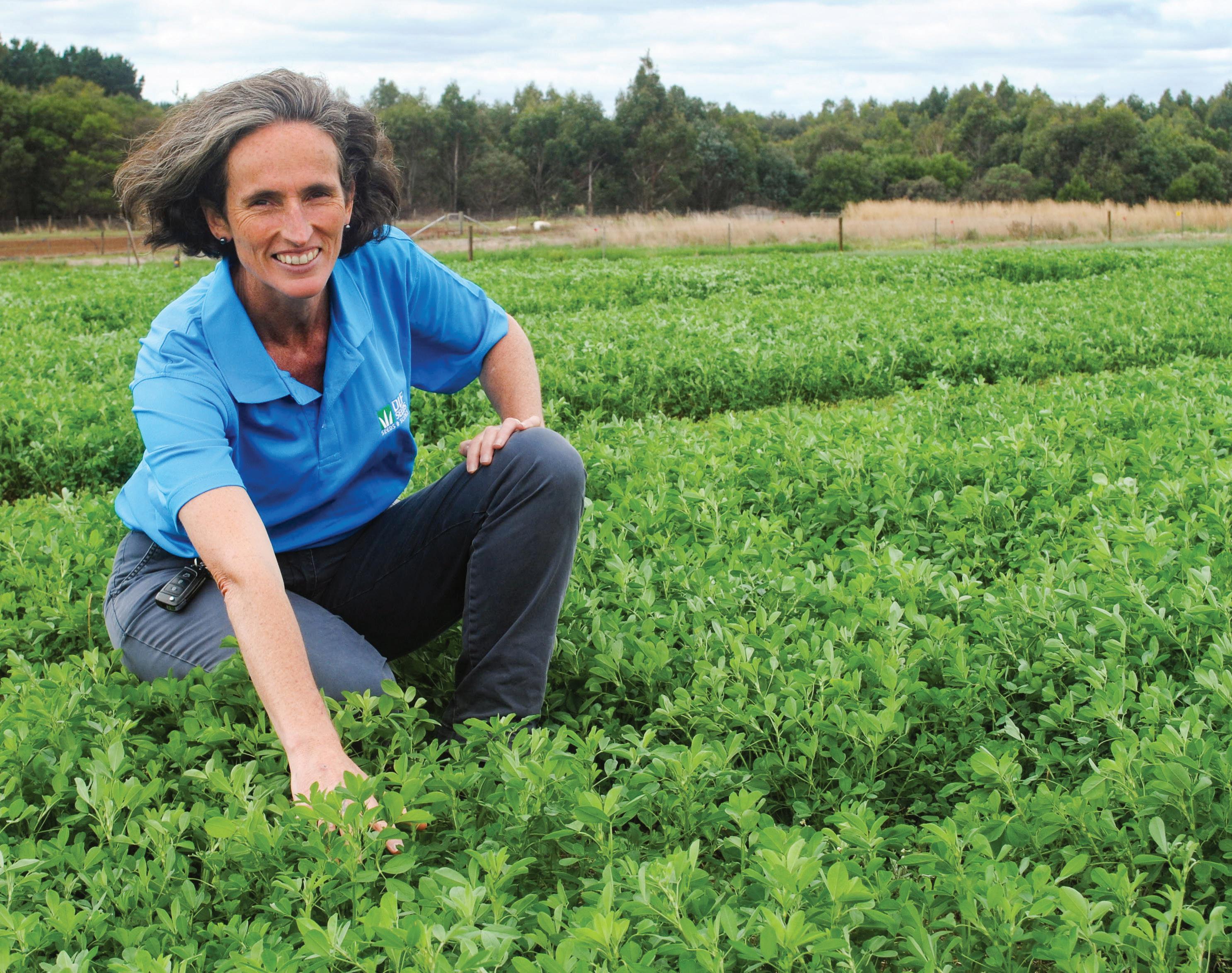
Crop Protection
VARIETIES FOR QUALITY HAY, TRUE GRAZING TOLERANCE & AUSTRALIAN BREEDING,
DORMANCY
SOW DLF SEEDS LUCERNE
SCAN ME dlfseeds.com.au
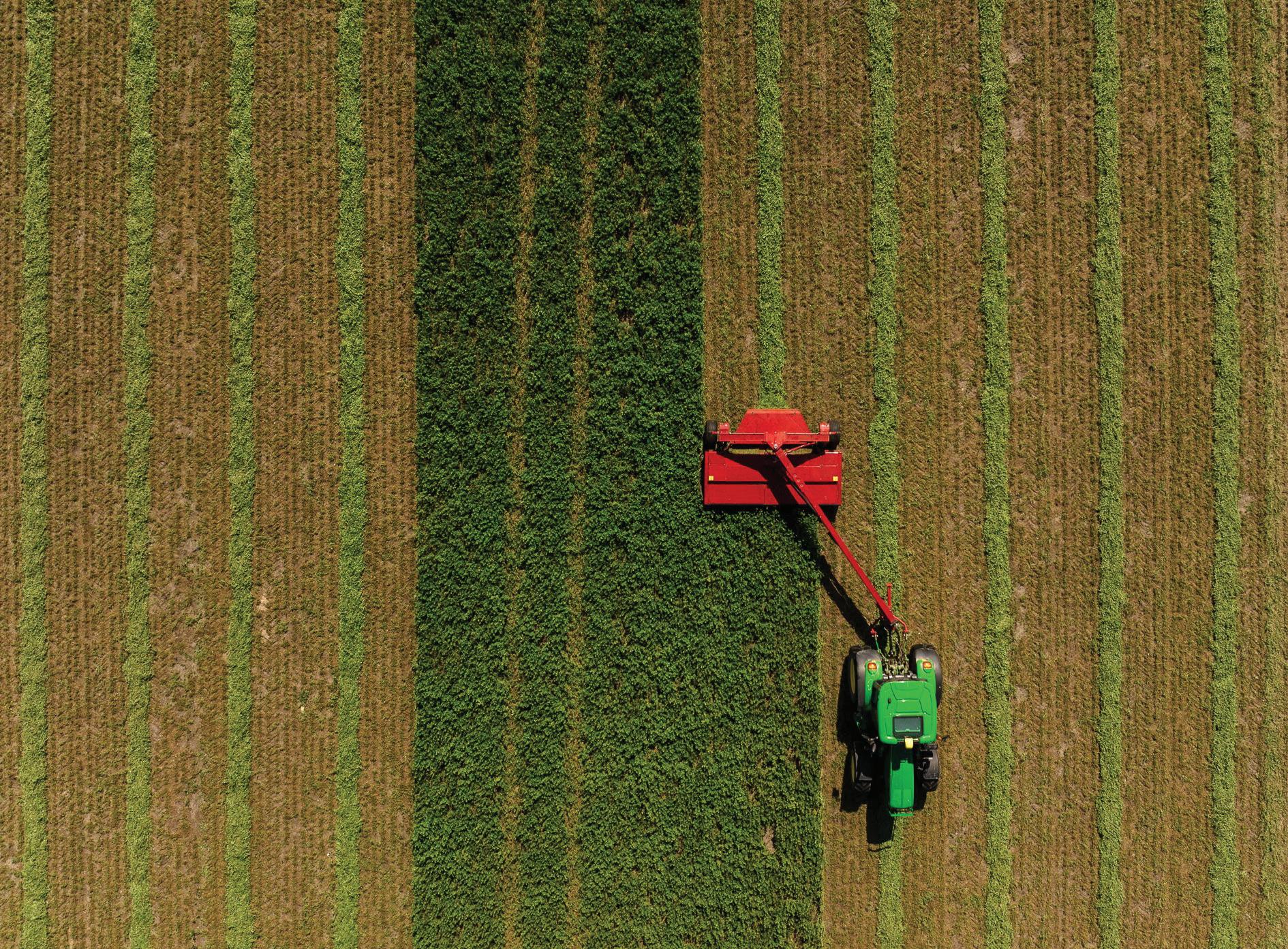
11 TIPS FOR GROWING LUCERNE
Consider these helpful suggestions from DLF Seeds before planting your lucerne.
1. SOIL TESTING
A soil test is recommended before sowing lucerne as it will not tolerate acid soils with high aluminium. Soil pH (CaCl2) should be above 5.5. If the soil is acidic (less than 5.5), then lime is recommended to raise the pH level. Also remember to choose the right paddock; lucerne requires free draining soil types and does not like waterlogged conditions.
2. TIME OF SOWING
Temperate: For higher rainfall southern regions, successful spring sowing of lucerne is achievable. This is due to control of winter weeds and rising soil and air temperature aiding establishment.
Dryland: Autumn sowing is recommended in low to medium rainfall regions where the majority of annual rainfall occurs in winter.
3. SEED BED PREPARATION AND SOWING
Weed control through spraying of glyphosate is recommended to achieve a knockdown. For autumn sowing lucerne, spray topping in the previous spring to reduce seed set of annual weeds before the autumn is another option.
If the soil test suggests the pH needs to be raised, incorporation of lime can occur; this starts the process to turn the paddock into a fine, firm, weed free seed bed. Pre-emergent herbicide such as Trifluralin can be used at sowing to control weeds to give the lucerne the best chance to establish.
4. SOWING DEPTH
Lucerne does not establish well from being sown too deep. The seed should be covered by 1 to 2 cm of soil. Using a roller after sowing is important to get good seed soil contact on lighter soils.
17 Crop Protection
5. SEED TREATMENTS
Treating lucerne seed is recommended in any situation for successful establishment. Seed treatments for lucerne include applying Rhizobia to the seed to aid nodulation of lucerne roots. Apron® XL fungicide and Poncho® Plus insecticide are also applied to provide each plant the best possible start to establish. This treatment is known as Superstrike® seed treatment.
6. FERTILISER REQUIREMENTS AT SOWING
Lucerne requires phosphorus and nitrogen at sowing to aid strong establishment. Single super phosphate at 250 to 300 kg/ha or M.A.P or D.A.P fertiliser at 80 to 100 kg/ha is recommended to be drilled with the seed.
7. SELECT THE VARIETY THAT BEST SUITS YOUR NEEDS
Consider the following three questions when deciding which variety to sow:
> What will be its main use (grazing, hay production or both)?
> How long do you want the lucerne stand to persist?
> When do you need the feed most?
Semi winter dormant (DLF Seeds Stamina® GT5 hay & grazing lucerne): Persistent stands with slow winter growth. In comparison to winter active types (6-7), semi winter dormant (5) varieties are well suited to grazing and quality hay production due to a lower crown and a semi-prostrate but denser growth than winter active types (6-7). Suitable for hay & grazing.
Winter active (DLF Seeds Warrego GT6 & Titan 7 hay & grazing lucernes): Tend to have smaller crowns with an erect growth that provides some winter growth (providing suitable temperatures). Strict rotational grazing management is required as winter active (6-7) lucerne varieties are comparatively less tolerant to grazing than semi winter dormant (5) varieties.
Highly winter active (DL Seeds Torrens GT8 & Titan 9 hay & grazing lucernes): Good winter growth with an upright growth habit. Vigorous at establishment and fast recovery from cutting or grazing. High production for at least three years, making them a great option in cropping rotations. Strict rotational grazing management is required as highly winter active (8-10) lucerne varieties are comparatively less tolerant to grazing than semi winter dormant (5) and winter active (6-7) lucerne.
Torrens GT8 however provides growers with increased persistence compared to traditional highly winter active varieties due to its grazing tolerance and below ground budding trait.
8. TOP DRESSING OF FERTILISER
A soil test will assist in making fertiliser decisions for your lucerne stand. Annual applications of phosphorus, potassium and lime (Ca) are commonly applied to lucerne stands as these are the major nutrients removed in grazing and hay lucerne stands.
9. CHOOSE A NEW VARIETY TO REDUCE DISEASE
Choosing a variety with newer genetics that offer better disease resistance will help in prevention of diseases occurring and therefore increases overall yields and persistence of your lucerne stand.
10.
TREAT FOR PESTS AS SOON AS THEY APPEAR
Lucerne pests include red legged earthmite (RLEM), lucerne flea and aphids which can quickly kill seedlings. Spray with registered insecticides as soon as they appear.
In recent years slugs have been a real problem in decimating newly sown pastures, crops and lucerne. Heavy soil types, summer rains and reduced tillage are all factors which promote the build-up of slug populations. Inspect potential paddocks prior to sowing and if found contact your local agronomist for control of this devastating pest.
11.
MANAGE FOR PERSISTENCE
The persistence of a stand of lucerne will depend largely on the way it is managed. Winter dormant varieties (because of their lower crown) are generally more suited to grazing than winter active types. When grazing winter active varieties, care must be taken not to eat out the crown. Strict rotational grazing must be employed and a recovery period must be allowed for the lucerne to regrow prior to future grazing.


18 elders.com.au Crop Protection

0.8g/L Abamectin & 0.4g/L Selenium (as Sodium Selenate) HIGH POTENCY - SHORT ACTING!
ACTIVE CONSTITUENTS:
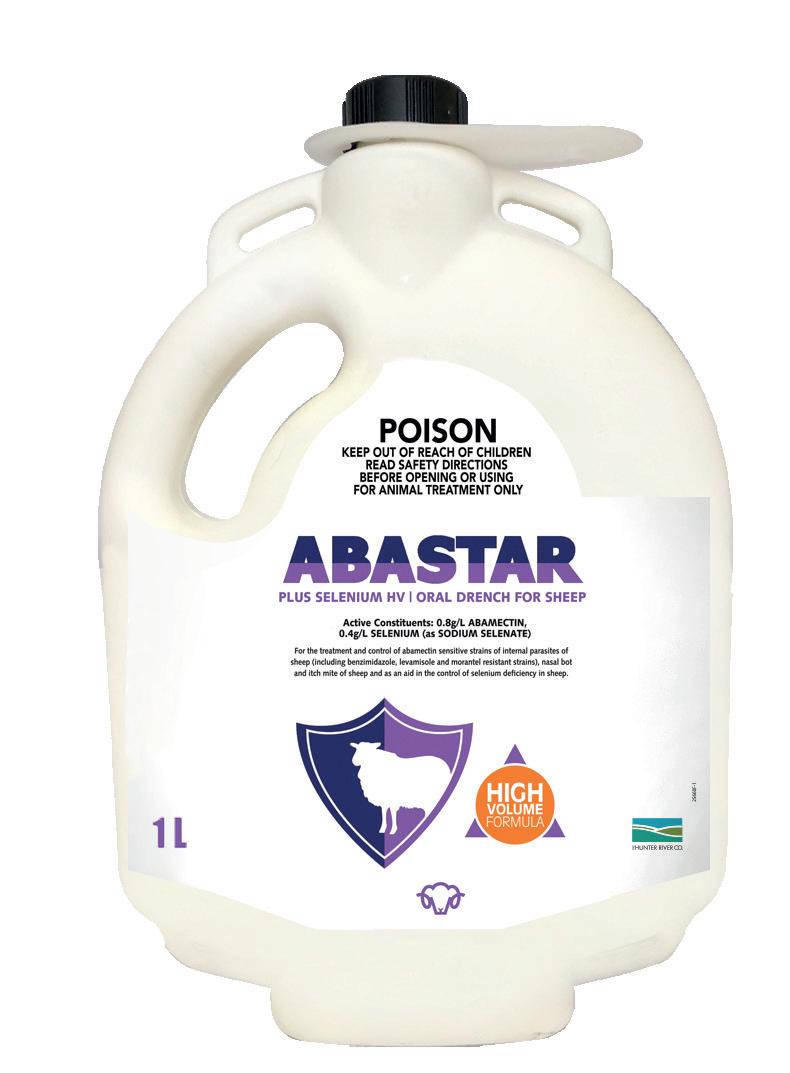

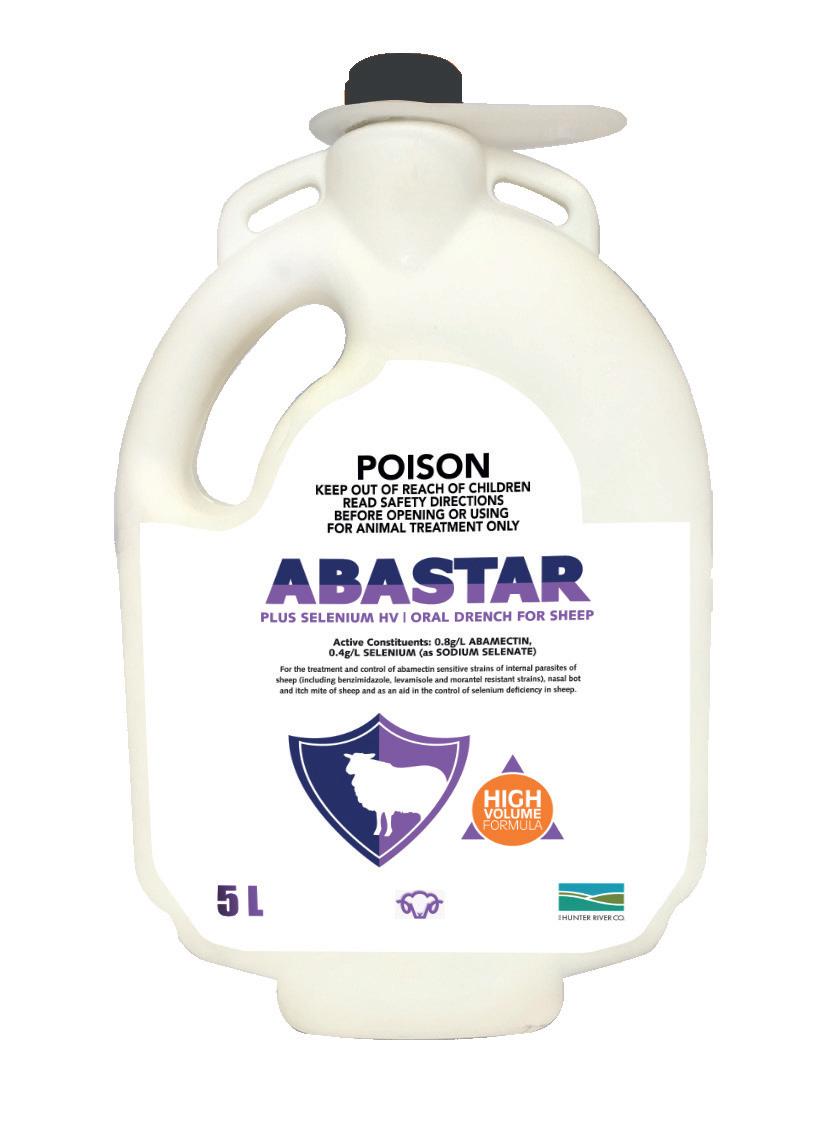


For more information, please visit hunterriver.com.au | PROUDLY AUSTRALIAN OWNED NEW!
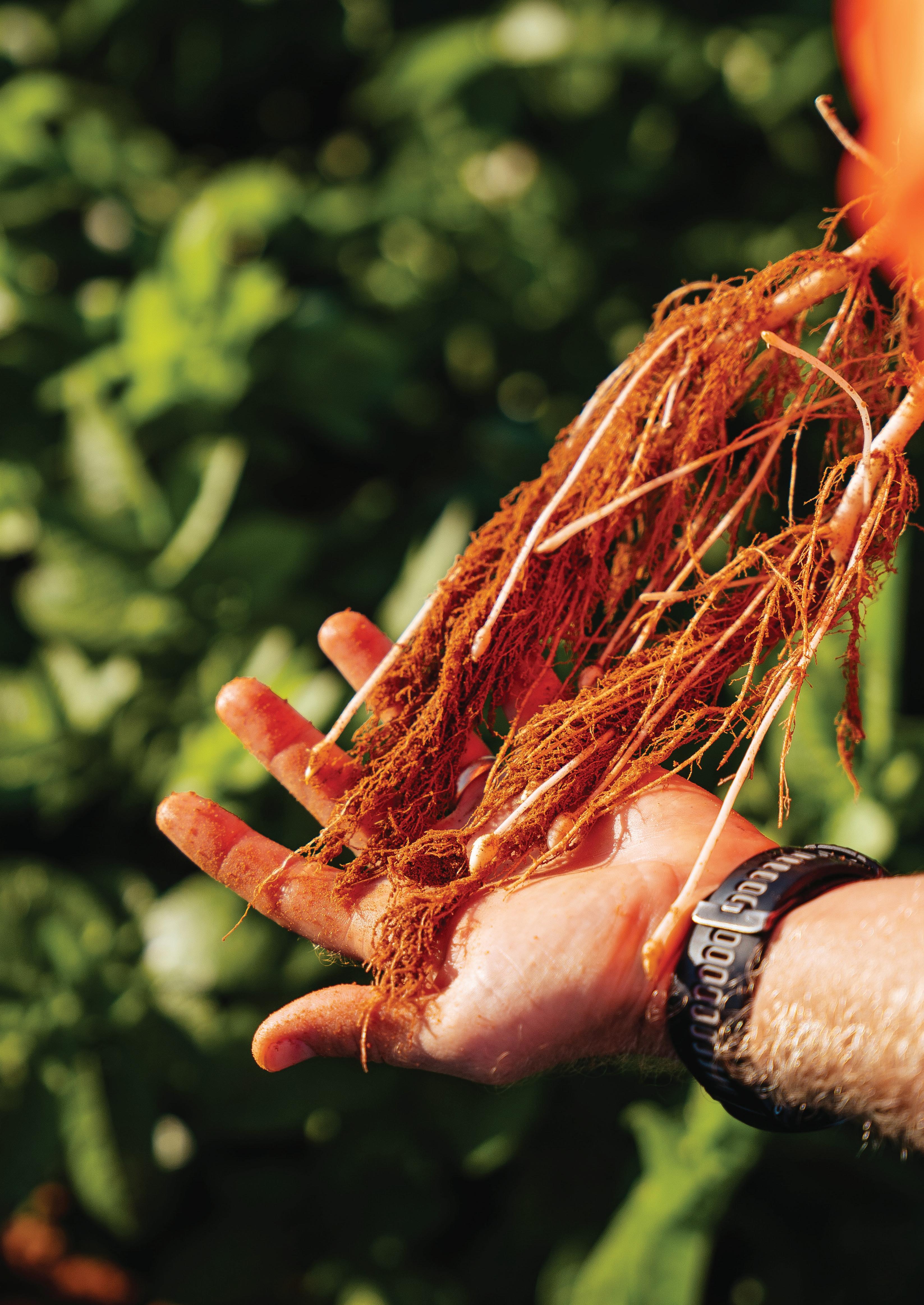
20 elders.com.au Fertilizer
OMNIA’S HUMATE SOLUTIONS – NURTURING SOIL, GROWING PROFITS, AND SECURING LONG TERM SUSTAINABILITY

Are you searching for a revolutionary solution to enhance your farming productivity while ensuring long-term sustainability? Look no further than humates – nature's proven resource for transforming agricultural results.
UNLOCKING NATURE'S POTENTIAL: WHAT ARE HUMATES?
Humates are organic compounds derived from the natural decomposition of plant and microbial matter. Within these compounds lies a treasure trove of benefits waiting to be unleashed on your farm.
WHY SHOULD YOU CARE ABOUT HUMATES?
1. Supercharge soil health: Humates are the ultimate soil conditioner, promoting soil structure, water retention, and root proliferation. They rejuvenate tired soils, turning them into fertile grounds for bountiful harvests.
2. Boost crop nutrition: By enhancing Cation Exchange Capacity (CEC), humates facilitate better nutrient retention and availability for your crops. Say goodbye to nutrient deficiencies and hello to nutrient-rich produce.
3. Support beneficial microbes: Humates foster a thriving ecosystem of beneficial microbes in your soil, creating a harmonious environment where plants can flourish naturally.
4. Increase plant vitality: Experience a visible difference in your crops as humates stimulate plant growth, improve photosynthetic efficiency, and enhance overall vitality. Expect healthier, more resilient plants with greater yields.

WHY CHOOSE OMNIA'S HUMATE SOLUTIONS?
At Omnia Specialities our commitment to the science of growing is the foundation of our operations, with our customers being the essence of our business. We accompany you every step of the way, from the extraction of humate to the final crop harvest. Our humate solutions are unique because we prioritise both the customer experience and the quality of our products.
> Unparalleled quality: We source our humates from premium raw materials, ensuring unmatched purity and efficacy in every batch.
> Innovative formulations: Our versatile product range, led by flagship solutions like K-Humate, caters to diverse farming needs, providing tailored solutions for optimal results.
> Commitment to sustainability: With our sustainable practices and dedication to environmental stewardship, you can trust that you're investing in a brighter, greener future for agriculture.
EXPERIENCE THE OMNIA ADVANTAGE TODAY
Unlock the potential of you soil with Omnia’s humate solutions. Embark on a new era of farming, embracing the power of humates and watching your farm thrive today, and for generations to come. Contact us now to discuss how Omnia can help you on journey towards agriculture success and sustainability.
21 Fertilizer
NURTURE SOILS, GROW PROFITS, AND SECURE LONG TERM SUSTAINABILITY
Omnia's Humate Solutions
• Promote soil structure
• Boost crop nutrition
• Support beneficial microbes
• Increase plant vitality



22 elders.com.au


ELDERS WELCOMES 2024 GRADUATE AGRONOMY COHORT
Elders has welcomed 11 new graduate agronomists who came together in Adelaide recently for a three-day induction
The group participated in a host of different activities to equip them in providing agronomic advice to growers right across
Elders Graduate Agronomy Program is specifically designed to foster a career in agronomy. Throughout the two-year duration each graduate will gain experience across a diverse range of sectors including winter cropping, horticulture, summer cropping and pastures.
Head of Elders Agronomy, Graham Page, said the program has been successfully running for 8 years with more than 10 percent (pc) of Elders' agronomy workforce today coming through Elders Graduate Agronomy Program.
“The key to success is having a structured program and multidiscipline approach to managing learning and development. When planning each rotation, we consider the needs of each individual graduate, the business, and senior agronomist’s, to ensure we are nurturing all for the best outcome,” said Mr
Leading this year’s intake, Manager People Operations Samantha Quintal, said the program provides on the job training and rotation across the branch network.
“The program is a great opportunity for graduates to learn about different cropping and pasture systems, as well as gaining broad industry knowledge and sound understanding of Elders business, Mrs Quintal said.
“Each graduate is paired with an experienced agronomist who will act as their coach, providing additional support and advice.”
“By the end of placement rotations, our graduates will be well equipped with the knowledge and skills needed to move into a successful career with us,” said Mrs Quintal.
Elders’ graduate agronomist based in Young, Montana Tatchell, said she was most looking forward to being able to build her agronomic skills and knowledge.
“As a young person in the industry, I think probably the key thing for us is to learn from our peers and our superiors and build our knowledge the best we can,” Ms Tatchell said.
“I’ve definitely learnt a lot this week. Getting to talk with some of the key suppliers that supply to Elders has been instrumental in building those relationships and continuing to learn about the chemistries and processes,” Ms Tatchell said.
Murray Bridge graduate agronomist, Brett Krieg, said a highlight from the week was the workshop on writing recommendations for clients and learning about the governance side of agronomy.
He went on to say he was looking forward to learning from and being coached by Elders senior agronomists.
IN ADDITION TO FOSTERING A NEW GENERATION OF AGRONOMISTS, ELDERS IS ALSO PREPARING TO WELCOME A NEW CROP OF LIVESTOCK TRAINEES.
A mix of first year and second year trainees will meet in Albury this month, where first year trainees will participate in their induction to the program, meet key Livestock leaders within Elders as well as join the second year trainees to undergo critical training for safe livestock handling practices. In preparation for transitioning off the program, specially designed skills workshops will be facilitated for the second year trainees to equip them for success in their new roles beyond the program.
“Whether you’re a Graduate Agronomist or a Livestock Trainee, the Elders Early Careers Program is the perfect way to develop and launch your career in one of Australia’s most recognised and most trusted agricultural brands”, Mrs Quintal said.
23 News
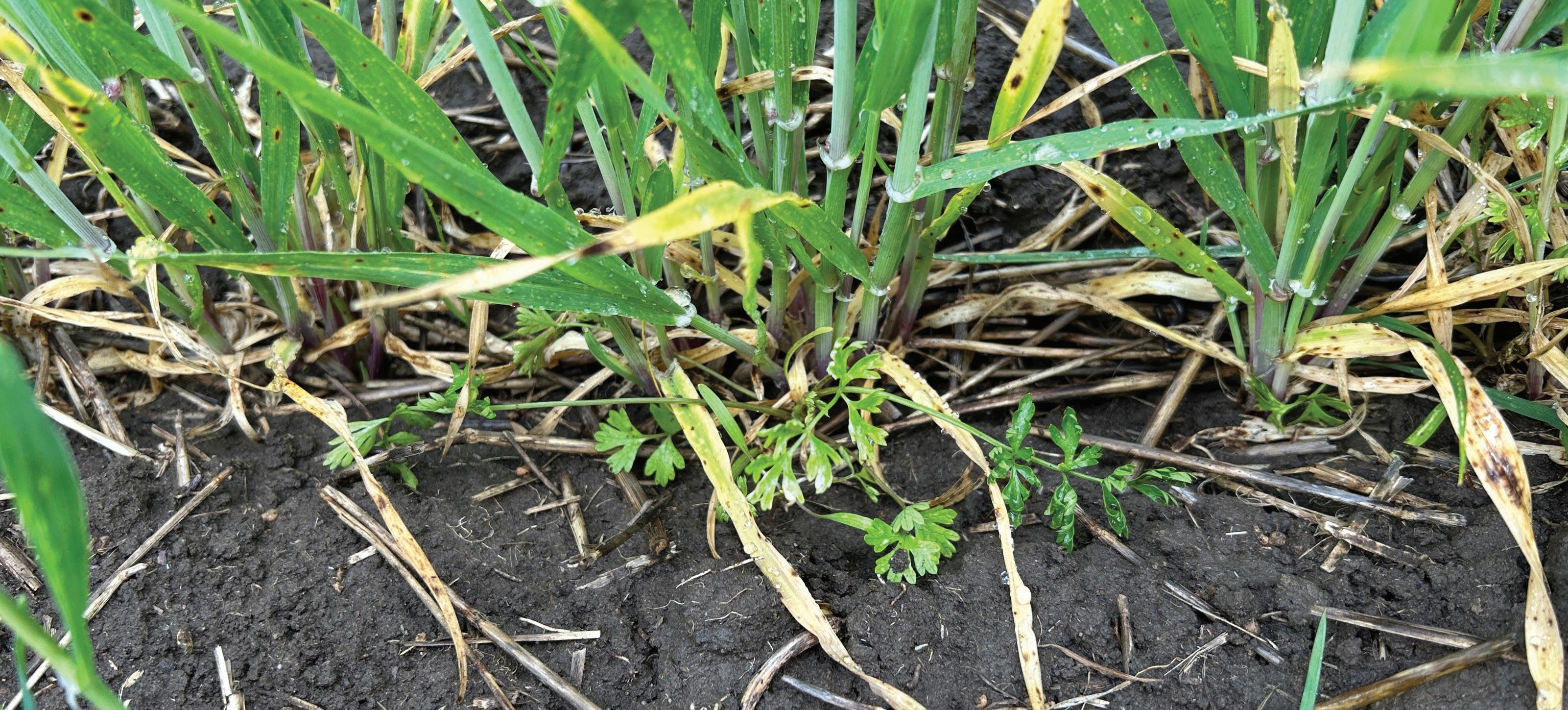
MORE FLEXIBLE BROADLEAF WEED CONTROL PAYING OFF IN CEREALS
Cereal growers are enjoying improved flexibility and results with their broadleaf weed control after the arrival of key herbicide tank mix partners that, importantly, also are proving to be costeffective.
The Group 2 post-emergent herbicide, Priority®, is boosting weed control from a range of broadleaf herbicides and now can be applied with additional herbicides from next season to help further broaden its weed control spectrum.
Developed by ADAMA Australia, Priority contains florasulam, an acetolactate synthase (ALS) inhibitor, in a suspension concentrate formulation and once absorbed via weed foliage, it is translocated to the growing points via the xylem and phloem.
Matt Coffey, agronomist with Elders at Yarrawonga in Victoria, said wild radish, volunteer canola and Paterson’s curse were some of the major broadleaf weed targets in cereal crops through the region and herbicide mixes with Priority were increasing to help combat them.
Matt supports growers from Lake Rowan in the south, up to Berrigan in southern New South Wales, and he said the application flexibility with Priority, including with late fungicide treatments, was one of its key attractions.
“It has a very good weed control spectrum, and it can be applied with clopyralid and amine to suit a wide range of growth stages,” he said.
“We have some big canola areas, so growers are not always able to get their early broadleaf applications done in cereals. However, at that stage, Priority with Triathlon® is a great mix, and whether it’s with herbicides like amine, Talinor® or Precept®, Priority can give control a boost and help with herbicide rotation.
“It can be a good alternative to Paradigm, providing good compatibility, reliability, flexibility and cost-effectiveness.”
He said weather events and related trafficability issues can affect the use of other herbicides that have more specific application timings, however this was where the extended application window with Priority was a big benefit.
“This is why we like to leave the use of this chemistry until later, as a result of the flexibility it offers. And we are very comfortable with its length of control.
“Underpinning the product is Group 2 chemistry, so we also need to be careful to protect this chemistry.”
Matt said the flexibility with Priority also extended to re-cropping options following its application, particularly on acidic soils, where there can be recropping restrictions after using other herbicide mixes.
Alistair Crawford, Market Development Manager with ADAMA Australia in Victoria, said Priority had shown strong capability to be mixed with various herbicides for improved control of key
broadleaf weeds in cereals including volunteer pulses and wild radish, but also of other brassica weeds.
“It is playing a bigger role now in the post-emergent space, with growers also not wanting to use clopyralid on stubbles due to its binding characteristics,” Alistair said.
“Priority also can now be applied in a tank mix with Affinity® Force and MCPA 750 herbicides without a wetter. This mix also can be used to target the difficult bifora weed, which is more prevalent around Horsham, as can new tank mixes with Quadrant® and Triathlon® herbicides.
“Compared with other contact herbicides, Priority is systemic and can improve bifora control, especially when there is some shading from the crop or other weeds when spraying,” he said.
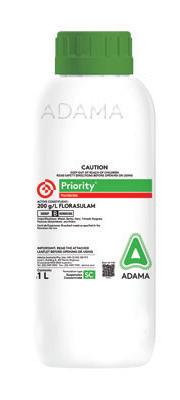
24 elders.com.au Crop Protection
Priority
The flexible option for your rotation.
Priority herbicide from ADAMA is an ideal tank mix partner for the control of broadleaf weeds in winter cereals, established ryegrass pastures and fallow.
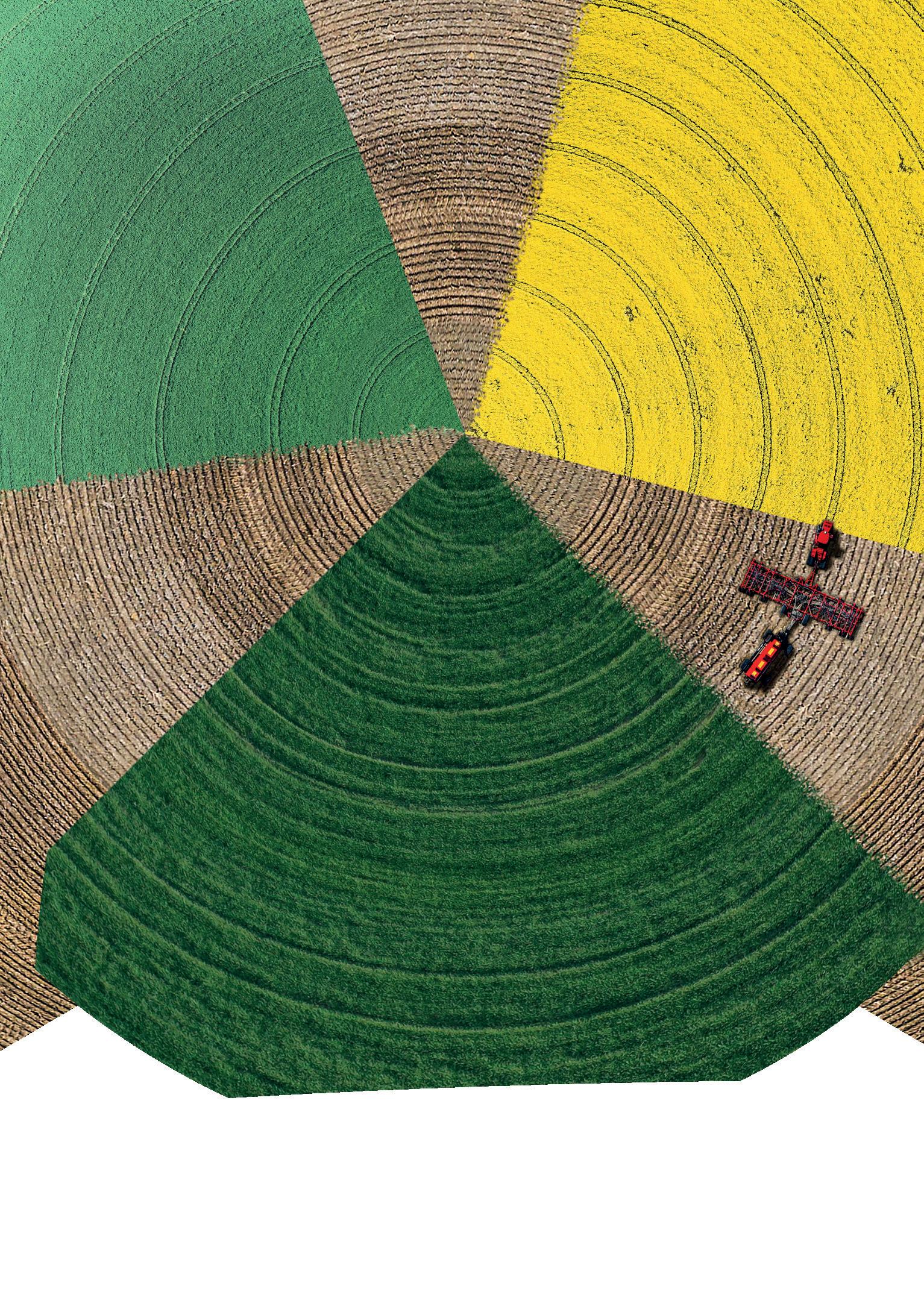
Scan here for more information
• Controls 54 key broadleaf weeds, including volunteer pulses and canola (non-imi varieties), depending on the tank-mix partner
• Apply between three and flag leaf stage (GS13-37)
• Relatively short plant-back intervals
• Apply safely in oats in a range of tank mixtures
• Compatible and concentrated formulation
25
®Registered trademark of an ADAMA Agricultural Solutions Company. ADA20297B
®
HERBICIDE
UNLOCK SOMETHING INCREDIBLE

ENHANCED N ITROGEN M AN AGEMENT
Utrisha® N can convert atmospheric nitrogen to a plantavailable form inside the leaf.
This ground-breaking foliar-applied technology supplies supplemental nitrogen to the crop throughout the growing season, giving growers more flexibility with their nitrogen management strategies.
Utrisha® N is a biological solution that works with a variety of crops for improved plant health and increased yield potential.
Embrace a balanced future
26 elders.com.au Call 1800 700 096 or visit corteva.com.au TM ® Trademarks of Corteva Agriscience and its affiliated companies. Always read and follow label directions. © 2023 Corteva. November 2023. FR10774.


THE NEW BIOSTIMULANT BOOSTING BROADACRE YIELD POTENTIAL
A new and unique biostimulant has shown in trials conducted across Australia that it can boost yields in a wide range of crops by providing a season-long source of supplemental nitrogen with just one application.
Utrisha® N has been developed by Corteva Agriscience and is a naturally occurring bacteria, Methylobacterium symbioticum, that lives within the plant and converts atmospheric nitrogen to plant-available ammonium.
Plants are colonised by Utrisha N through a foliar application and this can occur in as little as three days depending on temperature and species. This conversion process uses no plant energy and one application lasts for a full growing season.
Corteva Agriscience Plant Health Manager, Dan Cornally, said Utrisha® N was the realisation of years of research and development.
“Utrisha N has been brought to market backed by Corteva’s rigorous development standards and numerous field trials locally and around the world to demonstrate its effectiveness in a wide variety of crops,” he said.
“It is now available in Australia and will be the first offering in our new range of plant health products which provide innovative solutions for growers.”
Dan said early application of Utrisha N with its ability to provide supplemental
nitrogen in an annual crop’s life cycle, allowed growers to hedge against unseasonal conditions.
“If growers get Utrisha N out early, they know they have at least partially applied the topdressing nitrogen requirement,” he said.
“If the growing season gets too wet or dry, or fertiliser availability is compromised, Utrisha N will be in the crop and providing some level of nitrogen.”
TRIAL DATA AND ECONOMIC RETURNS
To verify the results seen overseas, field trials were conducted across Australia in 2023 at sites in New South Wales, Victoria, South Australia, Western Australia and Queensland.
One example is a field-scale trial in Calingiri, WA, conducted to determine if using Utrisha N in conjunction with Flexi-N® increased grain yield in wheat. All treatments, including the Nil plots had an application of 70 kg per hectare of nitrogen as a base treatment. Treatments were applied as a topdressing at GS32 growth stage of wheat.
Average wheat yield across 16 replications from Flexi-N alone was 3.11 tonnes per hectare (t/ha), compared to 3.27 t/ha where Utrisha N was added. This was a statistically significant yield increase of approximately 5 per cent.
“While individual results will vary due to rainfall, background nutrition, grower
programs and other factors, close to 100 small trial and farm demonstrations have been conducted across Australia to verify yield and quality gains provided by Utrisha N in a variety of domestic crops and conditions,” Dan said.
“What we’ve seen is Utrisha N performing as we would expect, based on the results of overseas experience, where it has been established in the market for some time.”
FLEXIBILITY IN NITROGEN MANAGEMENT
The ability to mix Utrisha N with many crop inputs means this application can be built into the field management program planned for that crop. Farmers and agronomists can then plan how best to manage the rest of the nutrition program to maximise yield and quality.
“There are also environmental programs being implemented which reward growers for reducing their inputs and/ or improving sustainability,” Dan said.
“Utrisha N may have a beneficial role to play in those programs and we will continue to work with growers to help them achieve their sustainability goals and understand if this is an appropriate way for their operation to use the product.”
27 Crop Protection
TALKING ABOUT ADJUVANTS FOR POSTEMERGENT SPRAYS

To simplify the decision and reduce the range of options to select from when it comes to adjuvants for post-emergent use, let’s discuss the important attributes to select for.
The range of agricultural products the adjuvant is recommended to be mixed with.
Generally, when the majority of products listed on the adjuvant label are nonselective herbicides like glyphosate and paraquat-based products, the adjuvant is probably intended for pre-emergent use. A notable exception to this is herbicide tolerant crops e.g. glyphosate or glufosinate-tolerant varieties.
Conversely, a label recommendation to use the adjuvant with selective herbicides, insecticides, fungicides and desiccants is usually indicative of a post-emergent use pattern.
THE RANGE OF ADJUVANT ATTRIBUTES REQUIRED.
Good post-emergent adjuvants typically have good wetting, spreading and penetrating qualities. This set of attributes – also known as deposition qualities, assist with optimising the performance of the pesticide product/s it is being mixed with by doing just that: thorough wetting of the foliage, ensuring the pesticide is spread over the target area, and helping it to penetrate through difficult to wet surfaces. Look for those words when selecting a postemergent adjuvant.
To enhance their performance even further, many post-emergent adjuvants are formulated to add additional
qualities to the ones already mentioned under deposition. These include sticking, rain fastness, improved compatibility, mitigation of poor water quality including hardness, and drift reduction. These typically optimise the result from the pesticide application by improving:
> Its persistence and how well it adheres to the treated surface.
> How resistant it is to being washed off by rainfall events.
> How stable the spray solution is when multiple products are added.
> How stable the spray solution is when water quality is less than optimal.
> To what degree off-target drift from fine droplets in the spray pattern can be reduced.
Some growers and agronomists select their adjuvant based on price or past experience, rather than pausing to consider what the spray situation, crop and conditions actually require. And ironically, as much attention as there is on purchasing arrangements for expensive pesticides – so little consideration is there for the most appropriate adjuvant to ensure the best possible result from those costly inputs, at a fraction of the cost of the chemical.
Discussed below are a few adjuvant options from the DKSH Agrisolutions range. Our post-emergent adjuvants are purpose formulated to enhance the performance of whatever product it is being mixed with.
ENHANCE SPRAY ADJUVANT
An emulsifiable spraying oil to improve the wetting and spreading of herbicides and desiccants. Assists with the uptake of herbicides through waxy leaf surfaces.
COMPANION SURFACTANT
An acidifying water conditioner and surfactant for herbicides to improve spreading and penetration.
It also improves the uptake of foliar fertilizers and minimizes spray drift.
KWICKIN SPRAY ADJUVANT
A highly penetrating esterified crop oil with non-ionic surfactants to enhance the effectiveness of post-emergent herbicides, insecticides, defoliants, and desiccants. It improves wetting, spreading and penetration of spray droplets while reducing evaporation.
WETOUT SPRAY ADJUVANT
Is a low rate, high spreading, new generation 1000 g per L non-ionic surfactant that enhances herbicides applied with course sprays, whilst also reducing spray drift.
Two other tank adjuvants designed to improve post-emergent sprays also deserve a mention:
AMMEND HERBICIDE ADJUVANT
Contains Ammonium Sulphate which is added to minimise antagonism between glyphosate and flowable herbicides (e.g. suspension concentrates) in tank mixtures. It also improves herbicide performance under adverse spraying conditions.
SUSPEND
Is a coupling agent and water conditioner for agricultural sprays, to maintain certain pesticide/fertiliser mixtures in suspension. Working with complicated, multi-product brews including fertilisers? Add Suspend to stabilise your tank mixture.
28 elders.com.au Crop Protection
Whatever Type or Colour Crop You’re Growing, We Have the Adjuvant for It
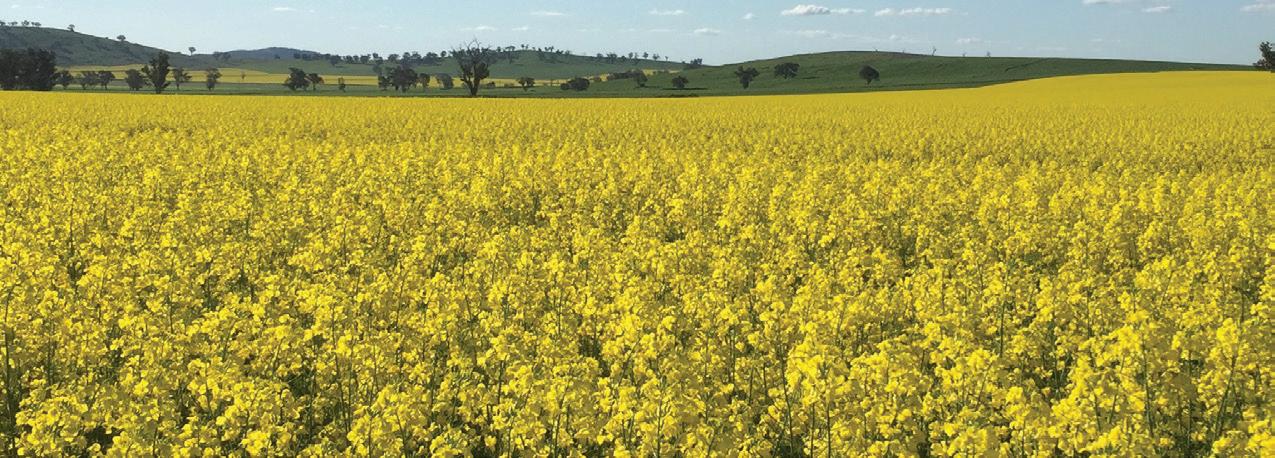










29 Seed Delivering Growth.

GOT OVERWATCH®? GOT OPTIONS.
When you have Overwatch® Herbicide in the mix, you’re ready for anything.
By delivering broad spectrum control of many important weeds including up to 12 weeks residual activity on annual ryegrass and a nil re-cropping interval to wheat, barley, canola and select pulse crops, only Overwatch® Herbicide gives you the flexibility you need.
ALWAYS READ AND FOLLOW LABEL DIRECTIONS. FMC and Overwatch FMC Corporation All Rights Reserved
UNIQUE MOA FOR
v atch are registered trademarks of FMC Corporation or an a liate. © 2024
BROADACRE

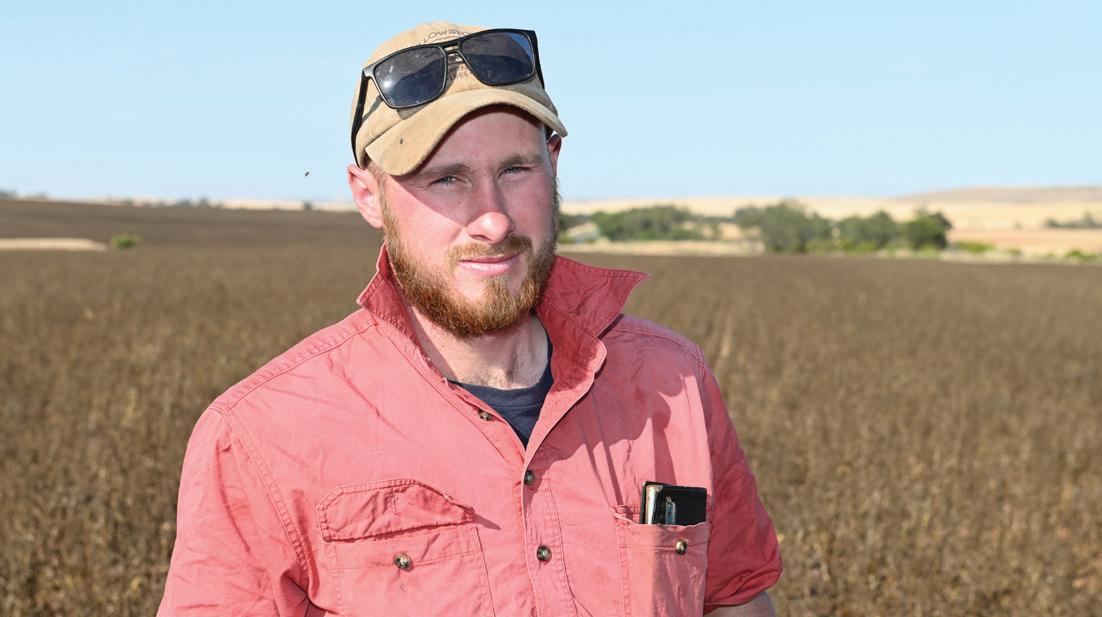

RYEGRASS CONTROLLED AFTER CHALLENGES IN THE PREVIOUS SEASON
A wet finish to the 2022 cropping season highlighted the challenges with ryegrass on the Henderson property at Caltowie, in the mid north region of South Australia.
Andrew Henderson, who crops 2600 acres and runs 800 breeding ewes with a self-replacing flock, said the wet spring over several seasons had meant ryegrass in some paddocks
“We had paddocks that we thought weren't too bad and then last year we really ran into some troubles,” he said.
“There were two or three paddocks with big problems which probably halved the yield potential. They really got smashed
“Ryegrass just keeps on coming and the way it's multiplied, especially over the last couple of years, it was out of control.”
Wheat and barley have been the predominant crops grown, with faba beans and canola also used as a double break predominantly to get on top of the ryegrass.
Also included in the ryegrass management strategy is a mix of herbicide options with some varying from those traditionally
“It's something I've been thinking about for a few years now,”
“We're trying to use different chemistry. We've been using Treflan* and Boxer Gold* for a long time and they've been good but we're getting to the point now where they are not as
In one paddock where ryegrass got away, Mr Henderson discussed a range of options with his local agronomist.
“We definitely knew we couldn't go in with another cereal, so we highlighted this paddock, to try and give it a double break.
“Talking with our agronomist, he suggested faba beans so we could use Overwatch® Herbicide. He was trying to introduce different chemistry into our rotation and still achieve a good kill on the ryegrass. We went with that program and are really
Overwatch® Herbicide was applied at the start of May as a pre-emergent mix with glyphosate. The beans were planted immediately after that using a 35-foot Morris bar and knife-
“We sowed the beans at a depth of 30 mm and dropped the speed back to seven or eight kilometres per hour to ensure a
“We were really happy. They came up well and there was hardly any ryegrass.”
He said an adjacent paddock was sown to vetch, and unfortunately, had wall-to-wall ryegrass.
“In the beans we were hard-pressed to find any ryegrass, so it was a really, really good result. I think the slower speed helped to get a nice even row and that meant better incorporation. We didn't notice any bleaching or anything. It was a terrific result."
Overwatch® Herbicide can show crop bleaching in some conditions, however, the slower sowing speed helped to reduce soil throw and the more even sowing depth meant there wasn’t any crop effect.
A post-emergent grass spray was applied at the start of July, with Overwatch® Herbicide still showing excellent residual activity throughout the crop establishment phase.
“There was a good eight weeks or more activity and even at harvest, there were still very low weed numbers,” Mr Henderson said.
“There's definitely a long-lasting effect with Overwatch®.”
He said a lot of farmers in the district were looking for new herbicide options and crop rotations to control ryegrass.
“There's certainly great scope for a product like Overwatch® to be used in a lot of different applications. People are really looking for something different."
Overwatch® Herbicide can be used in wheat including durum wheat, barley, canola, faba beans and field peas.
Mr Henderson said they used Overwatch® in barley, in its first season, in a paddock that had issues with ryegrass and bifora.
He said while there was some early crop bleaching this didn’t have any effect on the final yield and the weed control was excellent.
“It did a great job and I am certainly open to trying it again. Barley is one crop that we do need a good pre-emergent and it's probably one of our crops where we will need to try something different.
“I think you've just got to get your seeder set-up right. It’s a matter of dotting your "i"s and crossing your "t"s, so do your homework."
Andrew Henderson, of Caltowie, SA, used Overwatch® Herbicide in faba beans to control ryegrass which had become a greater concern during the previous wet springs.
31 Crop Protection
Overwatch® Herbicide treated faba beans paddock (left) compared to an adjacent vetch paddock (right) on the Henderson property at Caltowie, SA.
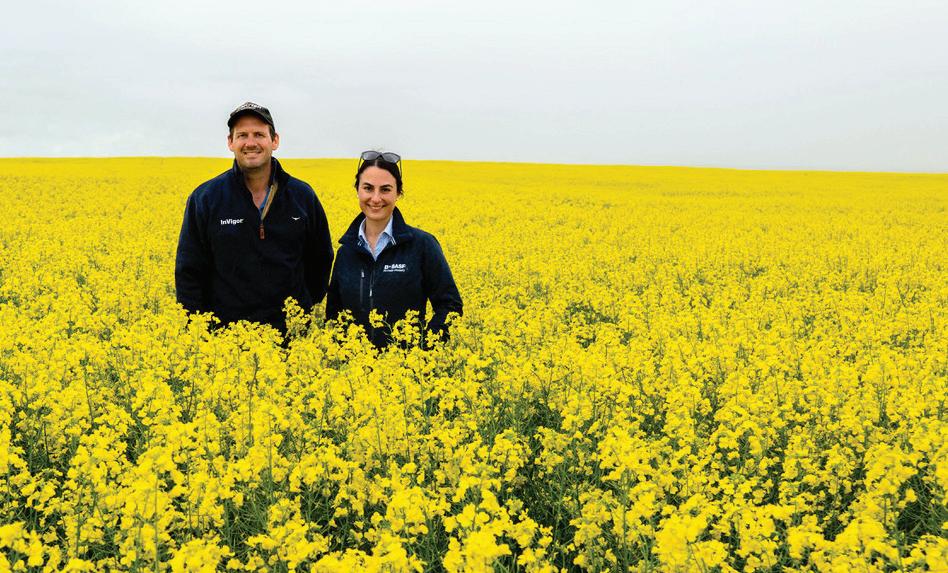

MORE VALUABLE PROTECTION FOR THE MOST VALUABLE BROADACRE CROPS
Sclerotinia and blackleg are two of the most damaging diseases in Australian canola.
Of course, the higher the value of the canola seed which growers have planted, the more costly any loss will be. That’s why the release of Revystar® is so significant.
Revystar is a co-formulated Group 3 and Group 7 fungicide unlike any other. Just as progressive innovations have steadily increased the productivity of hybrid canola varieties, including early hybrids with the same traits, Revystar uses advances within two wellestablished fungicidal chemical groups to increase their effectiveness against sclerotinia and blackleg.
BASF Market Lead Canola David Strong said the economics of growing hybrid canola make Revystar an especially good choice for foliar sprays in those crops.
“Local trials and overseas experience have shown that Revystar consistently outperforms other fungicides with the same modes of action on the two most potentially costly diseases of canola,” he said.
“By preventing yield losses and reduced grain quality in such high-value crops, it will deliver an excellent return on a comparatively small investment.”
The game-changing compound in the Revystar formulation is mefentrifluconazole, a DMI active branded Revysol®. Revysol is the first ‘isopropanol azole’ and has a uniquely adaptable molecule that can change shape to bind strongly with mutated disease pathogens which older DMIs may no longer be able to control. At a time when resistance to DMIs is becoming widespread, it is this capacity that makes Revysol a clear standout as the preferred choice in a crowded field of Group 3 fungicides.
But Revystar delivers more than just the benefits of Revysol with its second active ingredient also being a ‘best in class’ contender. Xemium® (fluxapyroxad) is a next-generation Group 7 SDHI active.
“Given that most growers’ spray programs probably already include a co-formulated Group 3 and Group 7 fungicide, it makes sense to upgrade to the new option that is likely to be less affected by resistance developing in
the most important diseases,” David explained.
“Its rapid uptake also makes it more tolerant of tricky weather conditions during and after spraying than alternative fungicides.”
Revystar is registered to control sclerotinia and both seedling and upper canopy infection (UCI) blackleg in canola. “With a seed treatment like ILeVO® now providing such a high level of early protection against blackleg,” said David, “we recommend that growers apply Revystar at 20–50% flowering so they get the protection against both diseases instead of just one. In most cases, preventing sclerotinia will be the priority and the protection against upper canopy blackleg will be a handy bonus.”
Revystar is also registered for control of six diseases in barley, including both forms of net blotch; three diseases in oats and oaten hay; and five diseases in wheat, including both Septoria tritici and Septoria nodorum, as well as for suppression of yellow leaf spot.
32 elders.com.au Crop Protection
• A new benchmark for protection against sclerotinia and upper canopy blackleg
• Rapid uptake and strong, long-lasting residual activity
• Highly profitable protection for high-yielding canola crops
• Improved control of key diseases in wheat, barley and oats as well


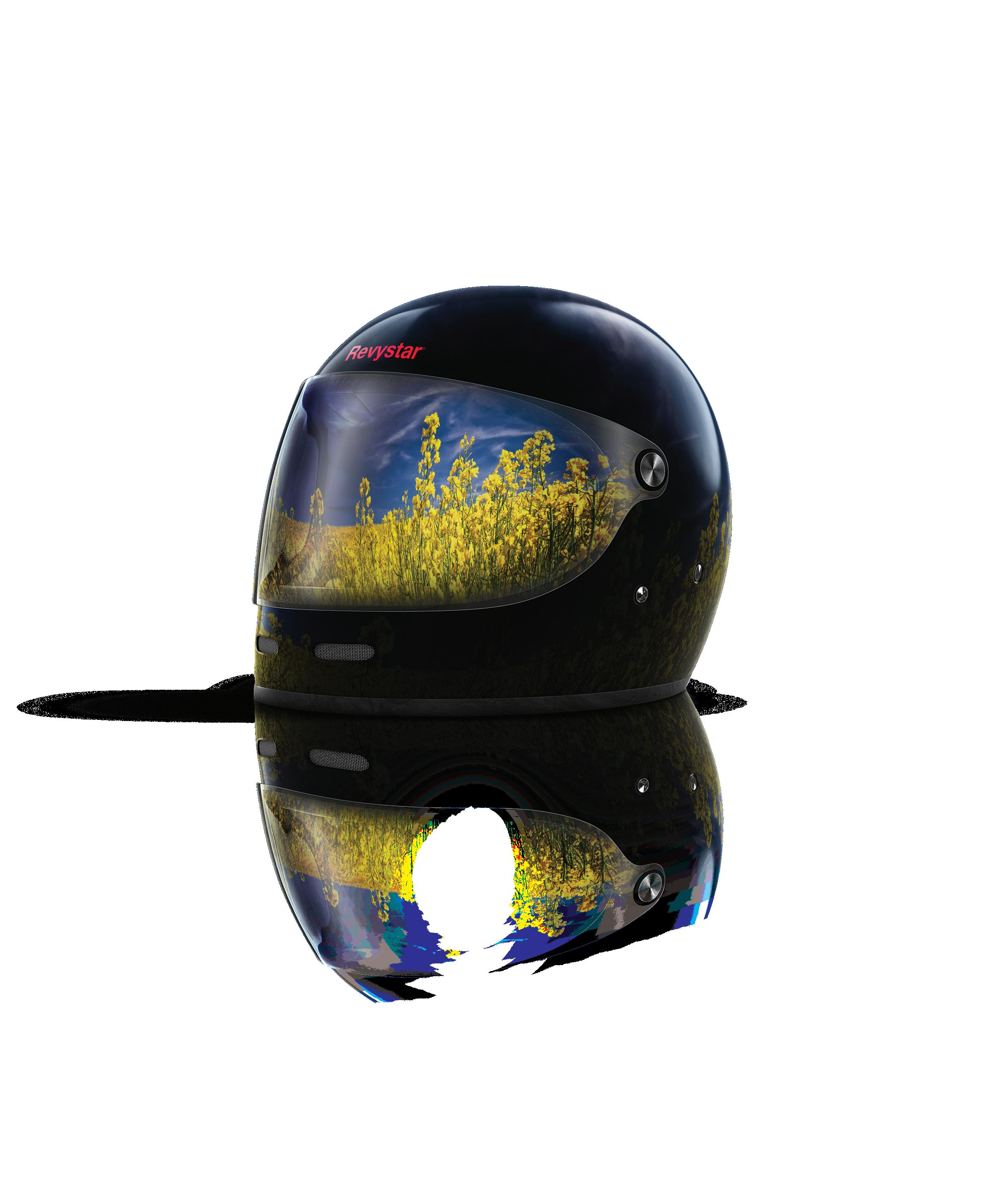
ALWAYS READ AND FOLLOW LABEL DIRECTIONS. © Copyright BASF 2024. Revystar® is a registered trademark of BASF. BASF0137 04/24 The new
first-choice fungicide for canola and cereals
find out more, scan here or call your local BASF representative on 1800 558 339
To
Adjuvant Package
Rainfast in under an hour in most conditions

Group 3 Fungicide Prothioconazole
Group 7 Fungicide Bixafen
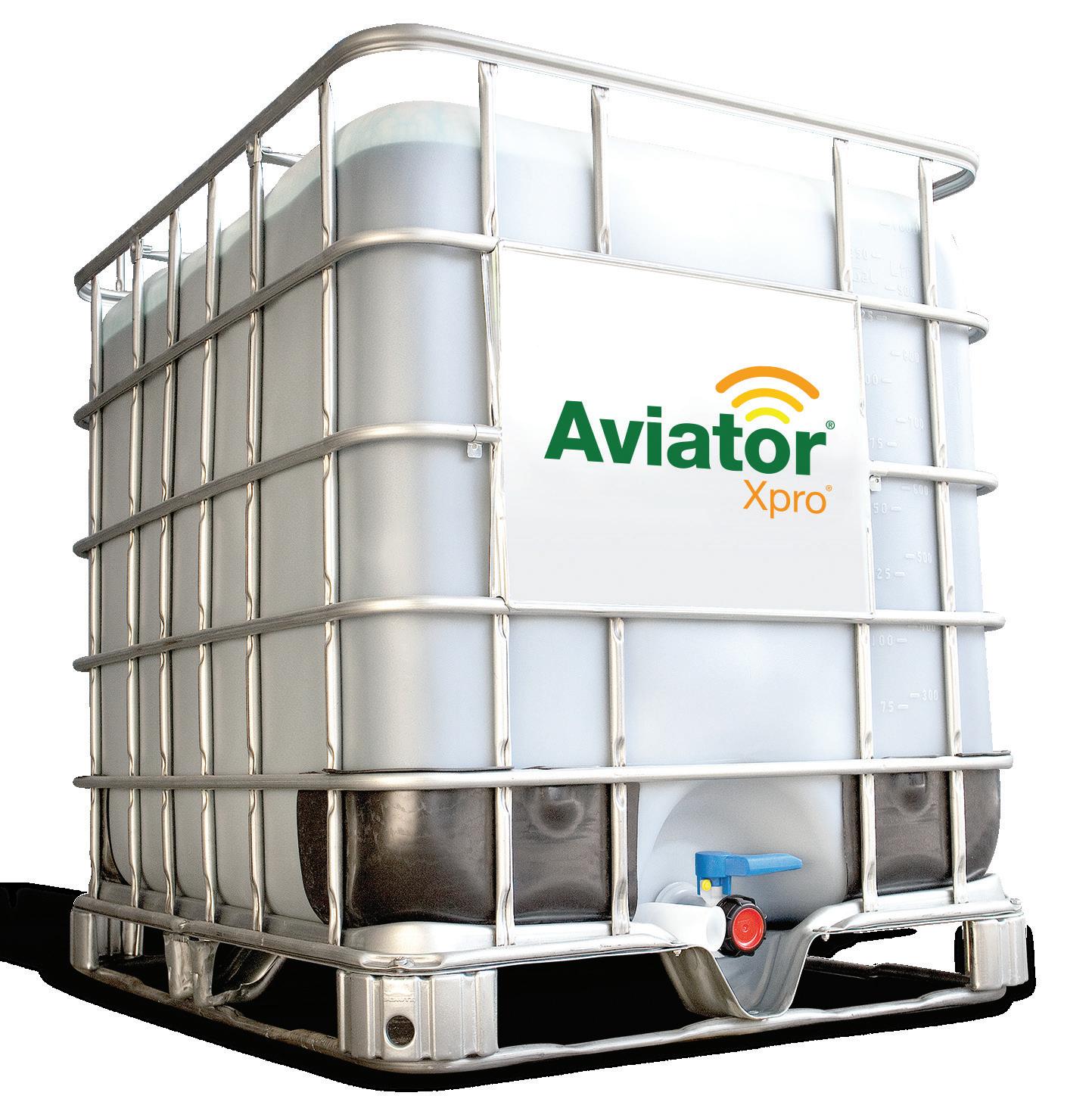



Now available in 1,000 L, 110 L, and 10 L packs.
Control sclerotinia, blackleg and upper canopy blackleg and suppress powdery mildew and alternaria in canola with Aviator ® Xpro® .
Two active ingredients provide:
• Two different fungicide modes of action for resistance management
• Long lasting residual control
Convenient adjuvanted formulation provides:
• Excellent spreading and leaf/plant coverage
• Rapid uptake into the plant
Contact your local Bayer representative for more information.
Bayer CropScience Pty Ltd ABN 87 000 226 022. Level 4, 109 Burwood Rd, Hawthorn VIC 3122. Technical Enquiries: 1800 804 479 enquiries.australia@bayer.com Aviator ® and Xpro® are Registered Trademarks of the Bayer Group. © 2024 Bayer Group. BHO2024B aviatorxpro.com.au
Powerful, broad-spectrum disease control.
FULL TOOLBOX APPROACH REQUIRED AGAINST BLACKLEG
? July, 2023 – Ongoing research into canola blackleg fungicide resistance is continuing to reinforce that growers should deploy a full combination of management tools against the disease, including avoiding fungicide applications where it is not necessary.
Blackleg disease causes an average 10 per cent yield loss in canola crops and has reduced yields by up to 90 per cent in some regions of the country.
The University of Melbourne and Marcroft Grains Pathology Pty Ltd at Horsham in Victoria have conducted blackleg fungicide resistance surveys annually in recent times and its 2022 survey was particularly extensive. It monitored fungicide resistance levels from where resistance already had evolved, also to determine if resistance was evolving to newer fungicide classes including SDHI and QoI.
About 50 stubble samples from high blackleg risk regions on the Eyre Peninsula in South Australia, in central New South Wales and in Western Australia were used to inoculate fungicide-treated seedlings of Stingray canola.
Up to four applications of different fungicides are often applied annually in these regions and this allowed more than 120 blackleg populations to be screened against the fungicides, which were applied at recommended label rates.
The survey screened millions of spores, which allows detection of very low levels of resistance if present.
Punnets of the Stingray seedlings were placed into plastic tubs and had the stubble suspended over them and wet-up to promote spore release. They were inoculated for two days before returning to the glasshouse.
Disease presence and severity was scored for each plant and in vitro assays of infected plant material were conducted to confirm resistance.
The latest blackleg resistance survey again confirmed significant resistance to DMI fungicides, while no resistance was detected to SDHI fungicides.
There was some potential resistance to QoI (strobilurin) fungicides, which also has been identified previously, although it is suspected the resistance could be to the DMI chemistry in these fungicide mixtures rather than the QoI chemistry and this will continue to be investigated.
These results have been highlighted with several fungicides in recent surveys, including Jockey® Stayer®, Prosaro®, Veritas® Opti and Aviator® Xpro®.
Of the samples with moderate to high levels of fungicide resistance over recent years, Jockey Stayer treatments have accounted for 40 per cent and up to more than 50 per cent, Prosaro from around 20 per cent to more than 30 per cent, and it has been a similar story with Veritas Opti, while Aviator Xpro fungicide has recorded nil levels of resistance.
Aviator Xpro, from Bayer, contains two strong active ingredients from different modes of action, including bixafen, a novel member of the SDHI fungicides, and prothioconazole, which is a third generation DMI. CropLife Australia supports the use of different fungicide modes of action for blackleg management as either mixtures, co-formulations or rotations and, hence, these two modes of action can help reduce the risk of resistance developing.
In addition to controlling blackleg in canola, including in the upper crop canopy, Aviator Xpro also controls sclerotinia and provides suppression of alternaria black spot and powdery mildew.
Its rapid rainfastness when compared with alternatives is another key attribute, helping growers to effectively manage disease during challenging seasonal conditions.
Angela Van de Wouw, University of Melbourne, said Aviator Xpro had shown a strong performance in recent resistance surveys.
Angela said the survey results echoed the strong industry messages around rotation of fungicide products and utilising multiple modes of action, however it also reinforced to growers that they should use all available tools to assist their applications and resistance management strategies, including the blackleg management App, BlacklegCM.
“Whether your canola crop is next to a canola stubble or a certain distance away from stubbles, the particular genetic resistance of your variety against blackleg, the region you are in and good monitoring during the growing season – these are all factors that contribute to whether you actually use a fungicide or not,” Angela said.
“Canola has become our second most valuable crop and, as a result, I understand that people may have just been putting fungicides on, but potentially they haven’t needed to.
“We need to look at more strategic use of fungicides in combination with all the other tools,” she said.

35
Data extracted from the 2022 blackleg fungicide resistance survey conducted by Marcroft Grains Pathology continued to show nil levels of resistance to Aviator Xpro fungicide. Notes: 122 stubble samples collected in 2022 and 103 screened (19 samples had insufficient disease for screening).
Crop Protection


For 185 years Elders has been embedded in the fabric of Australian agriculture and played a key role in rural and regional communities by employing local people and servicing local farming families. We're dedicated to continuing this legacy through our extensive network, and, by paving the way toward a bright future for agriculture through our ongoing focus on innovation and sustainability.
elders.com.au
36 elders.com.au
185
years of Elders

37 News Shut the front door. Elders does home loans. elders.com.au/loans Services provided by credit representatives of Elders Home Loans Pty Limited (ABN 22 118 064 654; Australian Credit Licence 384408). Lending criteria apply. Credit representatives may not offer the products of all lenders.


CANOLA GROWERS KNOW YEAR-ROUND WEED CONTROL IS CRUCIAL
In just a few years, Nufarm Crucial has established itself as a leading high-load glyphosate, outperforming the competition. With excellent compatibility and its strong performance on hard-to-kill weeds, it delivers simple, effective control for growers year-round.
Keith Perry, Agronomist at Elders Merredin, first tried Crucial when it came onto the market in 2020 and he’s been recommending it to growers ever since, mostly for pre-cropping knockdown as well as in-canola.
“Crucial is the most robust of the highload glyphosate formulations that’s out there at the moment. From an agronomist’s perspective, it’s nice to be able to recommend a product that you’ve got confidence in,” said Keith.
“Crucial has some advantages over some of the other glyphosate formulations with some difficult weeds like ryegrass in particular. We just know it’s a robust product and that’s one of the things we like about it.”
FLEXIBLE, COMPATIBLE AND EASY TO USE
Beyond its exceptional knockdown performance, Crucial is setting itself apart with an added advantage
– versatility. As the most widely registered glyphosate on the market, it can be used year-round, from summer to pre-emergent knockdown, to postemergent and pre-harvest. It’s also very easy to use and mix, with excellent compatibility and no need for additional surfactants.
“One thing that I really do like about Crucial is the compatibility in comparison to some of the other products that are out there, the highload glyphosates in particular,” said Keith.
“Here, it’s very common to mix it with trifluralin. It’s pretty common to use it with the likes of 2,4-D ester as a knockdown pre-crop and some of the Group G products like Terrad’or. All those Group Gs and things like atrazine, simazine and diuron – it mixes well with all of those.”
A GAME-CHANGER FOR CANOLA GROWERS
Thanks to its registration package, Crucial allows growers to simplify and streamline their glyphosate program, with a lot of benefits in particular for canola growers. Crucial is registered for key glyphosate-tolerant canola varieties
– Roundup Ready, Optimum GLY and TruFlex – so it delivers fast, effective control all the way from pre-emergent to pre-harvest. That means canola growers can move away from complex programs, with no need to switch between different formulations and surfactant packages.
“The fact we’ve got registrations for use in TruFlex and … the Opti-Gly canola now as well is a big advantage,” said Keith.
“We’ve also been using Crucial most years for pre-harvest desiccation.”
THE BEST OF BOTH WORLDS
For Keith and his growers, the results speak for themselves.
Crucial is a big step forward from the complex programs of the past – no more switching between different formulations and glyphosates throughout the year. With fast control and greater flexibility than other glyphosate formulations, it offers growers the best of both worlds.
38 elders.com.au Crop Protection

AUSTRALIA’S NO.1 ON HARD TO KILL WEEDS.

Get superior weed control for your Truflex ® , Optimum Gly ® or Roundup Ready ® canola crop with the unrivalled versatility of Australia’s No.1 glyphosate, Nufarm CRUCIAL.
Most widely registered. No other herbicide comes close to Australia’s own, Nufarm CRUCIAL.
Tailor-made for hard to kill weeds. 600 gram load & robust surfactant package deliver superior performance. Canola crops covered. Thanks to our exclusive registrations in canola, all your glyphosate tolerant traits are covered.
To find out more, scan the QR code or speak to your reseller.
CRUCIA
39
L®
Stand-out protection against fungal diseases in vegetable crops

• Unsurpassed quality assurance with 20 years of proven reliability
• Industry-leading control of sclerotinia in potatoes, lettuce, brassica vegetables and green beans
• Excellent prevention of early blight in solanaceous vegetables and neck rot in onions
• Effective protection for table grapes against powdery mildew and botrytis up to 4 weeks prior to harvest
To find out more, click here or call your local BASF reprensentative on 1800 558 339
ALWAYS READ AND FOLLOW LABEL DIRECTIONS. © Copyright BASF 2024. Filan® is a registered trademark of BASF. BASF0146 04/24
Filan ® is the trusted industry standard for sclerotinia control, and offers: NEW LOOK COMING SOON
KEEPING ON KEEPING KEY DISEASES AT BAY
The active ingredient Pinoxaden When growers describe a crop protection product as plain old ‘reliable and trusted’ you know they rate it very highly.
For a high percentage of vegetable growers, BASF’s Filan fungicide is the very epitome of reliability. Filan has gone from being a gamechanger when it was first launched to being a very dependable industry standard. One of those trusted tools that keep being used year in, year out. It contains a highly effective active ingredient in a unique proprietary formulation that has been producing excellent results for two decades.
“It’s a great thing that Filan has kept proving its value for so many seasons and earned so much grower loyalty,” said horticulture technical specialist at BASF, Mark Dicks.
Filan introduced boscalid as an active ingredient 20 years ago this May. It was the first Group 7 (SDHI) fungicide of its type –a pyridine carboxamide.
“One of the handy characteristics of Filan is its mobility within the plant,” Mark explained.
“The active ingredient is distributed through both translaminar and acropetal movement, so it can provide very high levels of long-lasting protection.”
Filan was specifically developed to get the most out of those advantages and maximise boscalid’s effectiveness as a preventive treatment. Growers know they can trust the entire formulation, not just the active ingredient, to keep performing as consistently in the future as it has since 2004.
“When R&D innovator companies like BASF develop a new product, we invest a huge amount in resources ensuring that the active ingredient can perform at its optimum
“Many different formulations containing combinations of the active ingredient and proprietary adjuvants are tested against each other in a whole range of application and environmental conditions.
“The preferred final formulation will often have advantages like easy mixing, better distribution of the active and better retention of the spray droplets on the leaf.”
Two decades after its optimised boscalid formulation was developed, Filan is still setting the standard for sclerotinia control in potatoes, lettuces, brassicas and green beans. In potatoes, tomatoes, capsicums, eggplants and peppers it’s also a preferred option for preventing early blight. Many onion growers rely on it for excellent neck rot control, and table grape growers take full advantage of being able to use it against both botrytis and powdery mildew.
“After so long in the market, most growers know how to get the best out of Filan,” Mark said.
“It should be applied early and used preventatively as it binds very strongly to the waxy cuticle in the leaf and provides extended residual protection with high levels of crop safety.
“Filan still very much deserves to hold its place as the preferred SDHI in vulnerable crops. It’s been delivering great results for 20 years and continues to deliver excellent value as well as strong, long-lasting control of key diseases.”

41 Crop Protection

AXIAL® XTRA FORMULATION AND EVOLUTION IN PINOXADEN
The active ingredient Pinoxaden remains a highly valuable tool for the management of wild oats and phalaris across wheat and barley production systems, Australia wide.
While we have seen cheaper formulations become available, for not much more money, there’s AXIAL® Xtra herbicide; a step up in efficacy and ease of use, according to Syngenta Senior Product Lead Garth Wickson, who said it’s well worth the investment for growers and advisors.
“In a sense, there’s little in common between AXIAL® Xtra and other Pinoxaden formulations,” Mr Wickson said.
“Having discovered and developed Pinoxaden, we’ve moved on from the old generation of AXIAL®, which would be a fairer comparison to 100EC formulations.
“AXIAL® Xtra includes the latest adjuvant technology for enhanced performance.”
Mr Wickson said growers have observed several advantages with AXIAL® Xtra.
“AXIAL® Xtra has superior compatibility with other foliar products you would commonly want to apply in crop, including broadleaf herbicides, fungicides and insecticides, to foliar nutrients,” he said.
“While tank mixing a broadleaf herbicide with a Group 1 herbicide will generally lead to some decrease in efficacy, using AXIAL® Xtra provides more confidence
when it comes to saving time and limiting passes.
“Our built-in adjuvant also supports superior Pinoxaden uptake within the target, which creates that faster, more consistent burn down of weeds.”
Being one of a handful of companies dedicated to the discovery and development of new active ingredients, Syngenta recently increased its research and investment budget to $2 billion.
Syngenta Learning Centres are conducted every year across Australia, well attended by Elders agronomists who make their own assessments of these products. This puts Elders on the front foot ready to support farmers with these new tools.
Mr Wickson said the process of discovery to first sales of a new product often took 10 years, sometimes longer.
“Our teams of scientists spend untold hours in the lab optimising every new formulation based on tests inside our greenhouses and at trial sites across Australia,” he said.
“AXIAL® Xtra selective herbicide has benefited from continued research and development, which we’re quietly proud of.
“These are improvements that we’ve applied from experience at every step.
“We match this with investment in enhanced manufacturing processes, which benefits every drum of AXIAL® Xtra.
“In comparison, our tests of other Pinoxaden formulations have found significant issues with active ingredient degradation, formulation crystallization and emulsion issues, which lead to reduced weed efficacy and general frustration on-farm.”
AXIAL® Xtra has a flexible rate range to suit the weed spectrum, target weed growth stage, and stage of the crop.
Adhering to the WeedSmart Big6 principles, it is possible to target ARG early post-emergent with BOXER GOLD® herbicide (Group 15), as part of an integrated management plan. Foliar application of AXIAL® Xtra (Group 1) can be subsequently used to target later germinations of grass weeds including ARG, wild oats and phalaris.
Applications of AXIAL® Xtra must only be made between the two-leaf and firstawns stage of wheat and barley crops (GS12-49). There is a label provision for selective spray topping wheat and barley to manage seed set of wild oats (note, a maximum of one application of AXIAL® Xtra is allowed per crop).
Your local Elders agronomist can advise you on suitable strategies to manage herbicide resistance with Group 1 herbicides.
please supply caption for photo 42 elders.com.au Crop Protection
Discover the A XIAL® Xtra benefits.
Local trial results show that the optimised adjuvant package included in every drum of AXIAL® Xtra delivers improved activity on grass weeds, faster brownout and better compatibility, all without compromising crop safety. For further information speak to your local Syngenta representative or Elders branch today.






43
Par tner of 1 ( A ) ® Registered trademark of a Syngenta Group Company. © 2024 Syngenta. AD 24-109.
Suction filter washed with water.
Suction filter cleaned with All Clear DS.
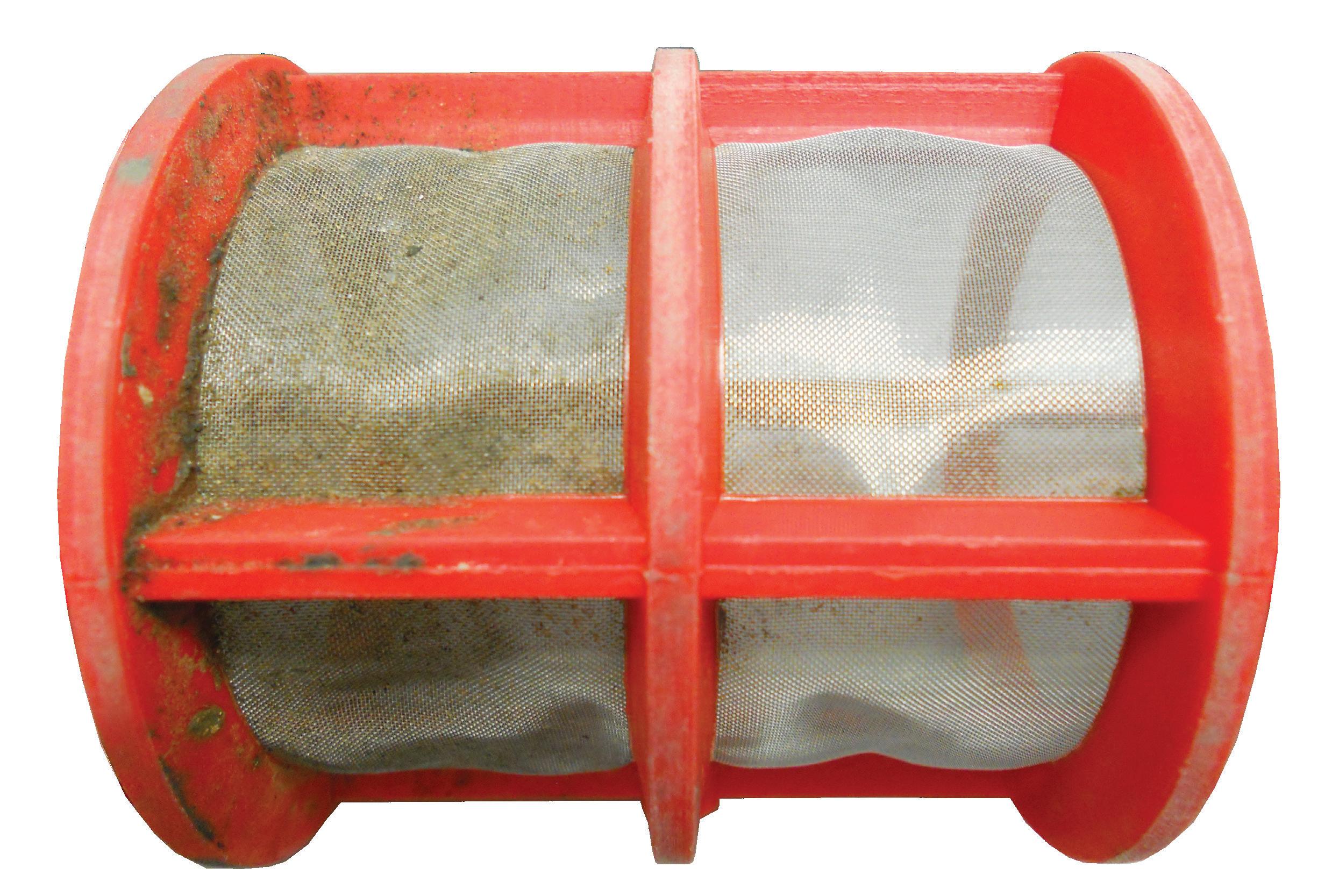
You’ll stick with Because little else does!
When it comes to removing damaging residues from your boom sprayer, All Clear DS outperforms other tank cleaners on the widest range of products.
Feature Benefit
Single dilution rate
Convenient and simple to use
Non-corrosive No equipment damage
Low foam
Long shelf life

Easy to empty spray tank
Carry over season to season + +
SURFACTANTS
To physically remove residues and stop re-sticking
DETERGENTS
To solubilise and break down residues
SEQUESTRANTS
To lock up molecules and improve rinse out

®Registered trademark. 231018
SLUGS & SNAILS LOVE IT TO
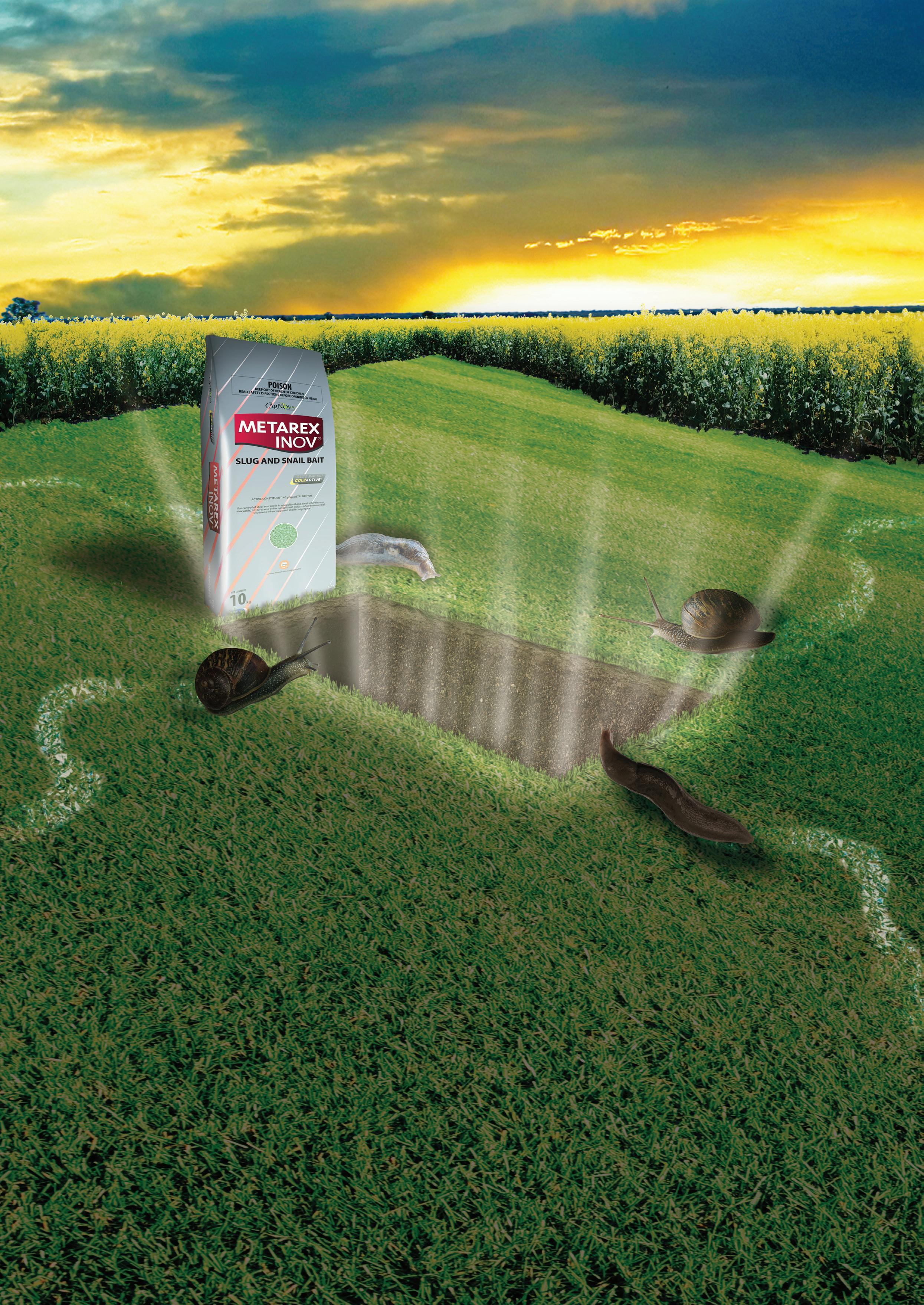
METAREX INOV All Weather Slug & Snail Bait developed from science and nature providing superior control based on unique technology for enhanced delivery.
Maximum Attractiveness
Enhanced Palatability
Faster Efficient Kill
Persistent Control











®Registered trademarks. 231018

TOOLS FOR SUSTAINABLE FARMING WITH SPEEDRITE PORTABLE SOLAR ENERGIZER RANGE
As stewards of the land, farmers understand the importance of protecting natural resources. At Datamars Livestock, we support our farmers’ passion for sustainability by designing eco-friendly, economical tools for everyday use.
Speedrite, Datamars Livestock’s industry-leading electric fencing brand, is unveiling two new models to complete the portable solar energizer range. These cutting-edge devices show our dedication to providing farmers with environmentally friendly solutions that empower them to embrace sustainable practices, while ensuring the safety and security of their livestock and crops.
Speedrite’s portable solar energizers, designed for easy installation and maximum efficiency, harness solar energy to deliver reliable electric fencing power. As the world continues to prioritize sustainability, these new models align perfectly with the growing demand for eco-conscious farming equipment.
KEY FEATURES:
> New models: Speedrite’s trusted solar energizer design, now with bigger panels and batteries in 2 J and 3.5 J options.
> Various operating modes: Four different power modes (full, half, day, night) that provide power when you need it and conserve energy when you don’t.
> Voltage indication: Indicator lights show output performance of the energizer to determine whether fence needs inspecting.
> Rugged design: Large, easy-tograsp terminals, easy-to-access battery compartment, and ergonomic handle all designed for one-handed use in tough environments.
> Versatile mounting: Familiar design for mounting on a wood or steel post.
> Easy installation: Set up these portable energizers with ease, making them ideal for remote locations or rotational grazing systems.
> Environmentally friendly: Reduce reliance on conventional power sources, contributing to a cleaner and more sustainable planet.
Commenting on the launch of these innovative products, Fadi Allos, Senior Product Manager at Datamars Livestock, said, "We are committed to providing farmers with the tools they need to farm sustainably.”
“Our Speedrite portable solar energizers are a testament to this commitment. They not only offer economic benefits but also promote responsible land management.”
46 elders.com.au


available
Power
anytime, anywhere




FOR WEATHER UPDATES WHEN YOU NEED THEM. Download the Elders Weather app today. OR VISIT ELDERSWEATHER.COM.AU TO CHECK THE FORECASTS AUSTRALIA WIDE

























 References:
References:


















































































































